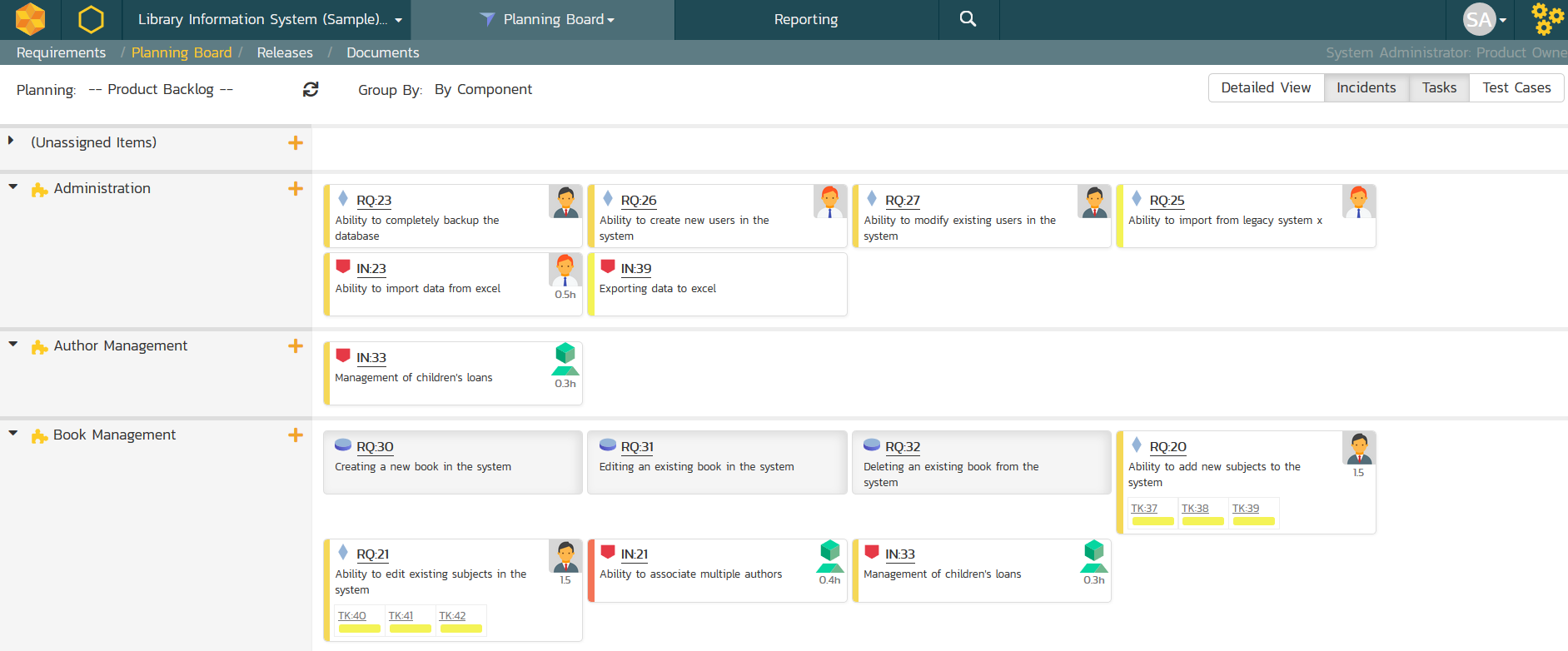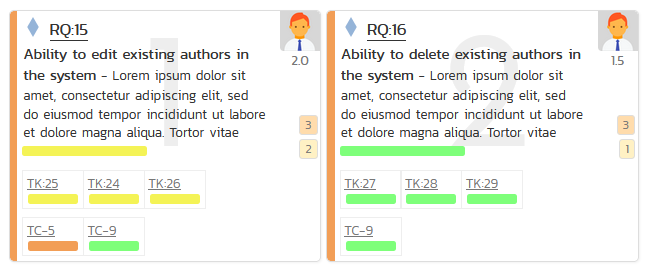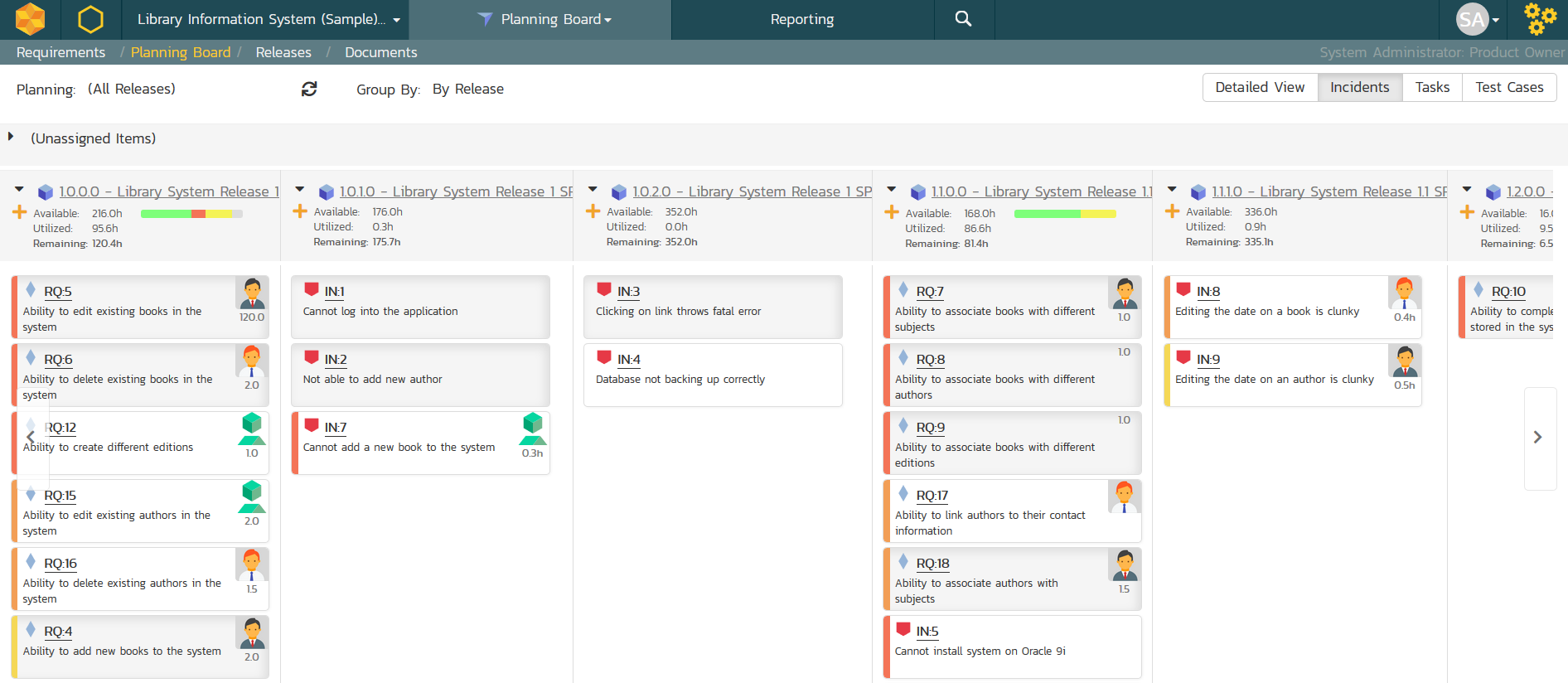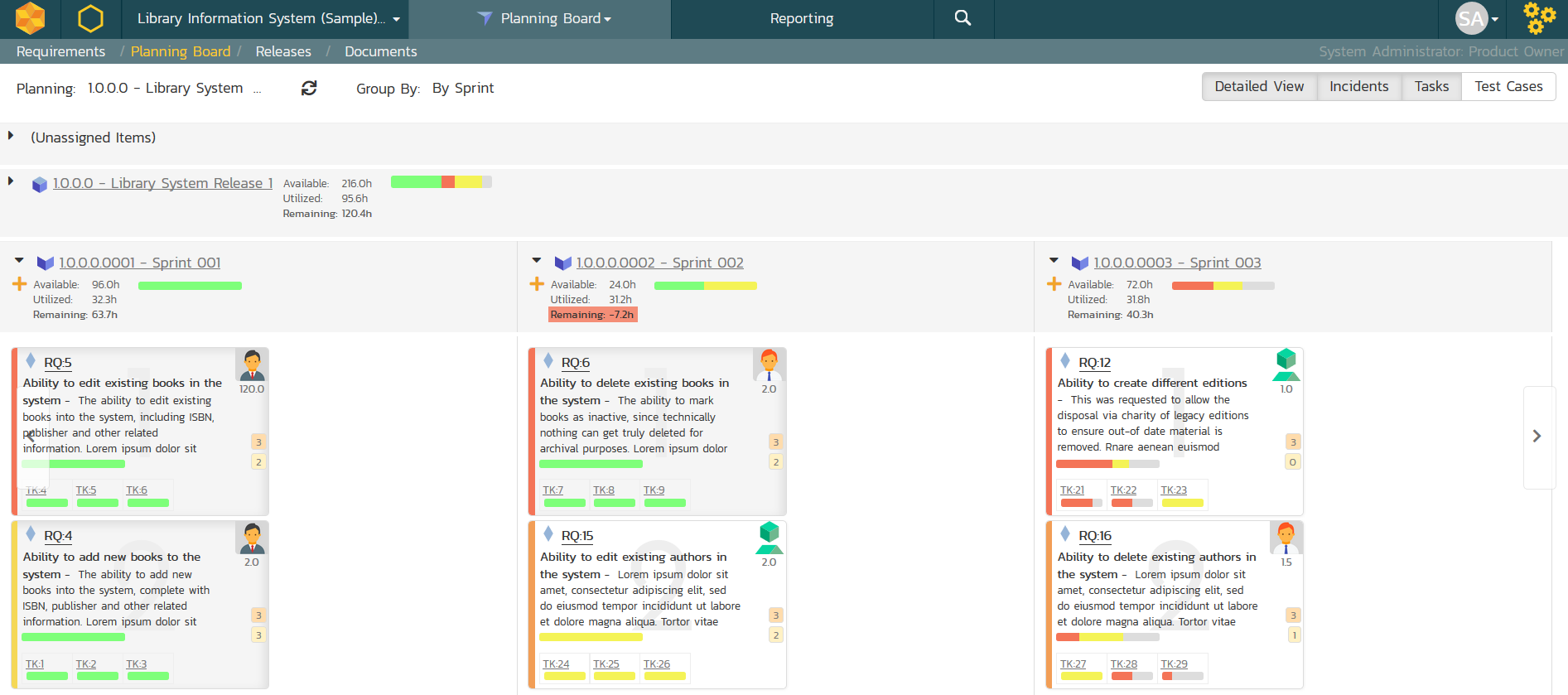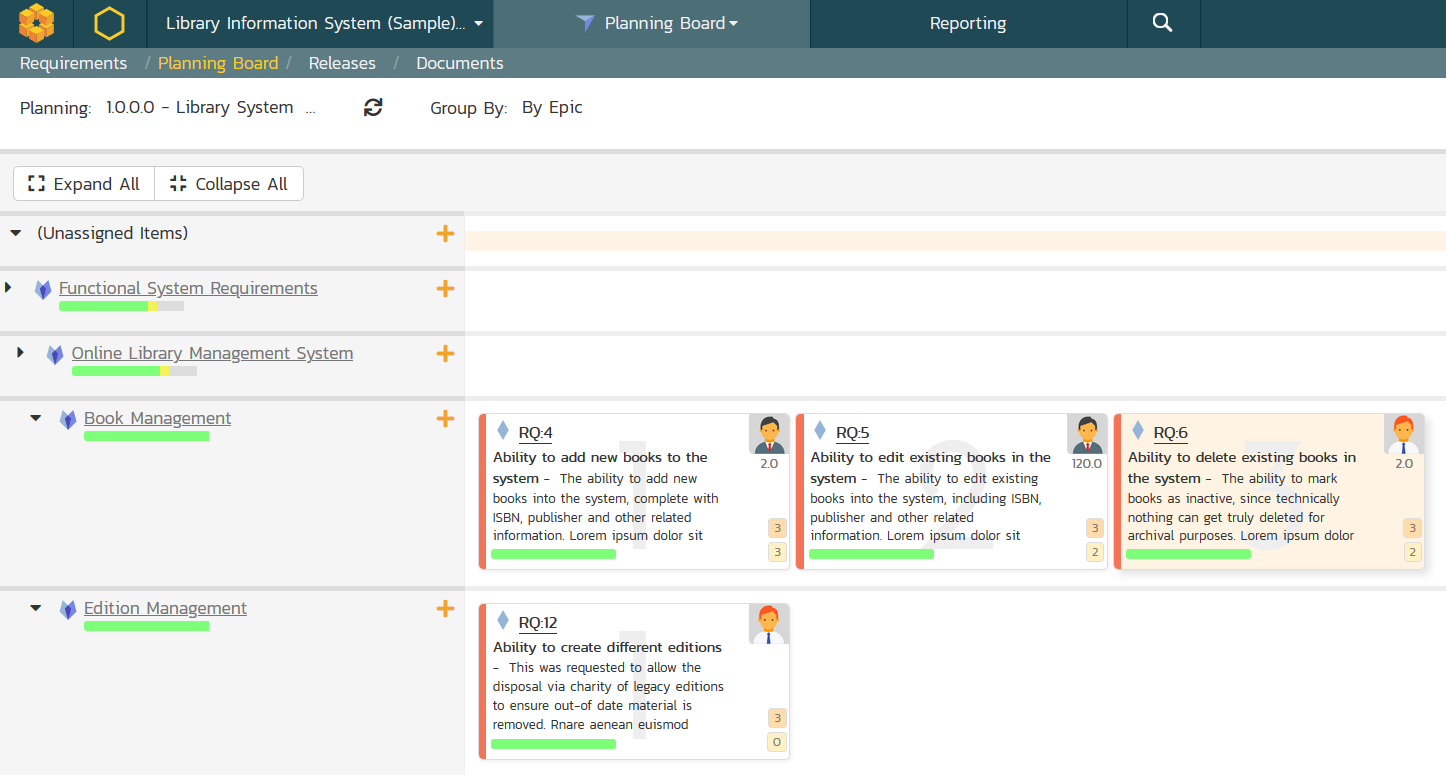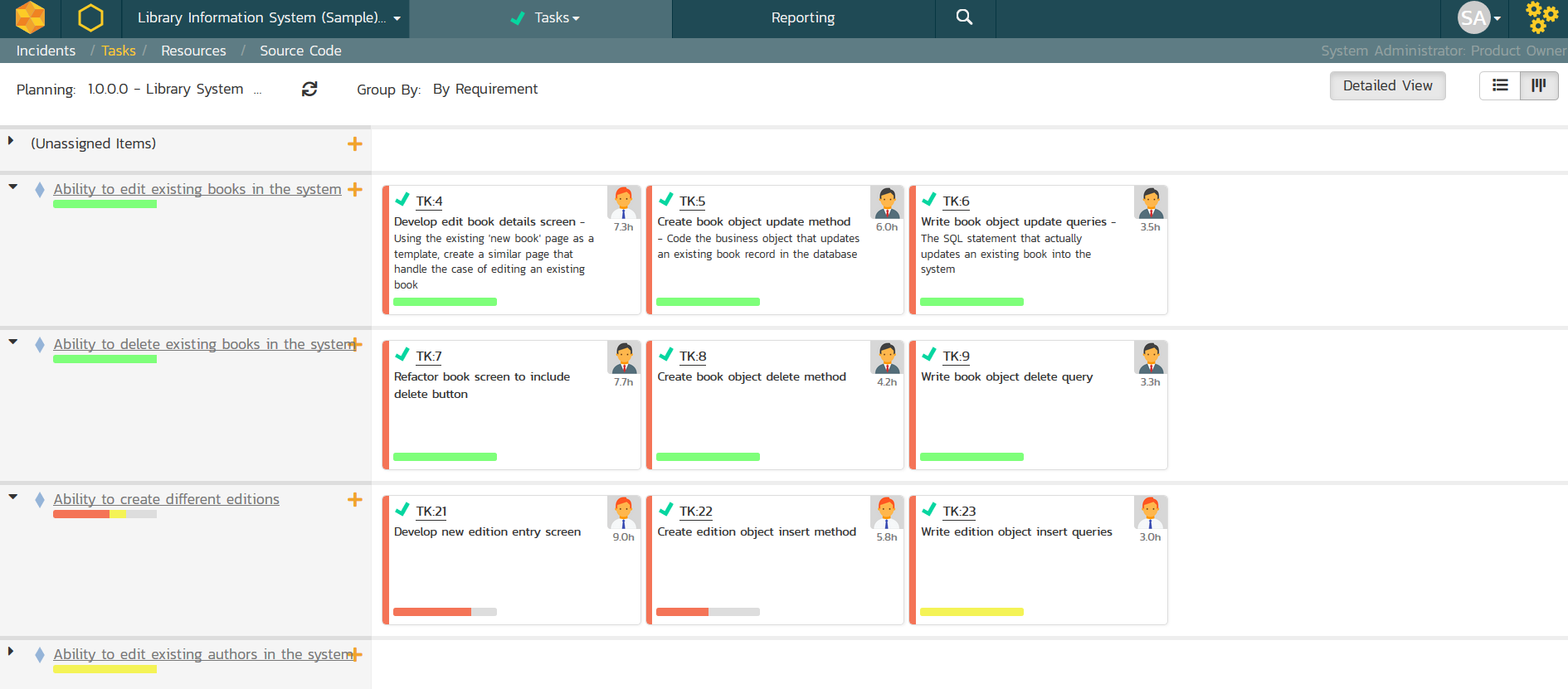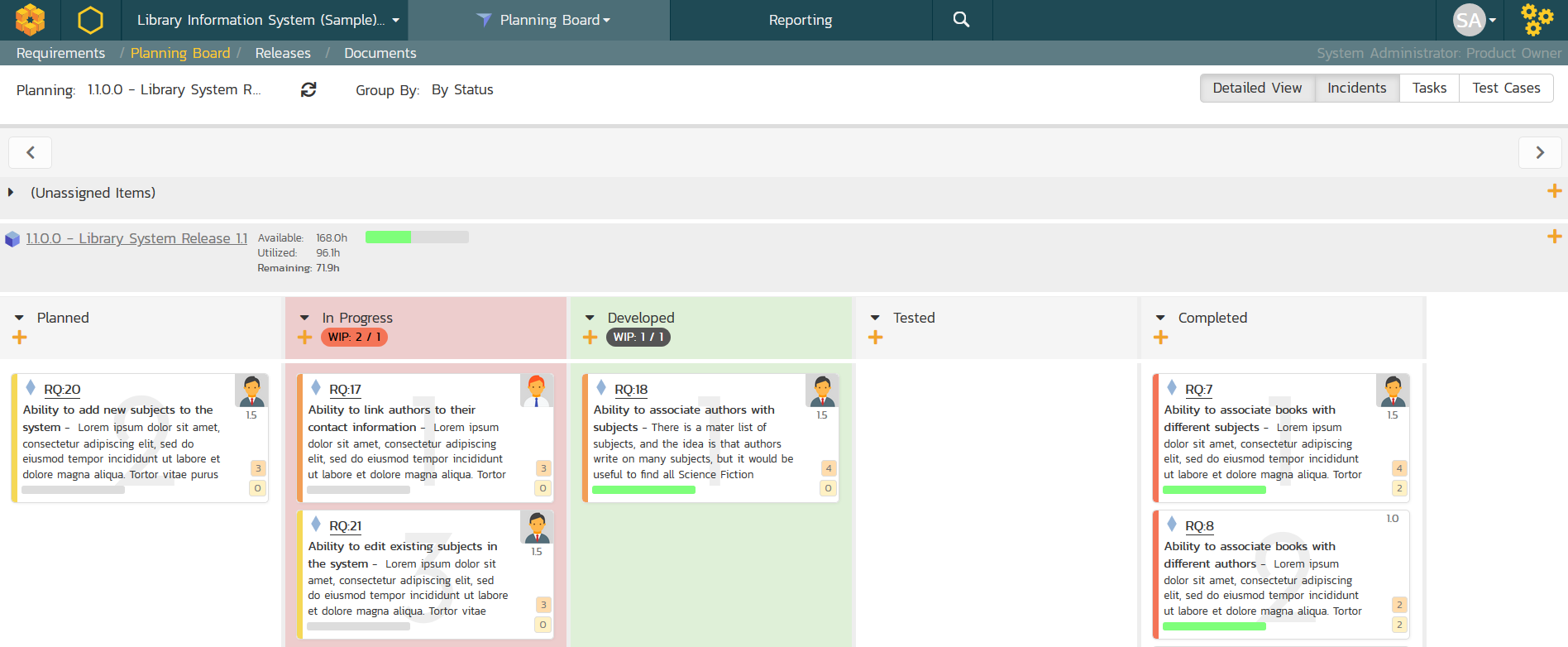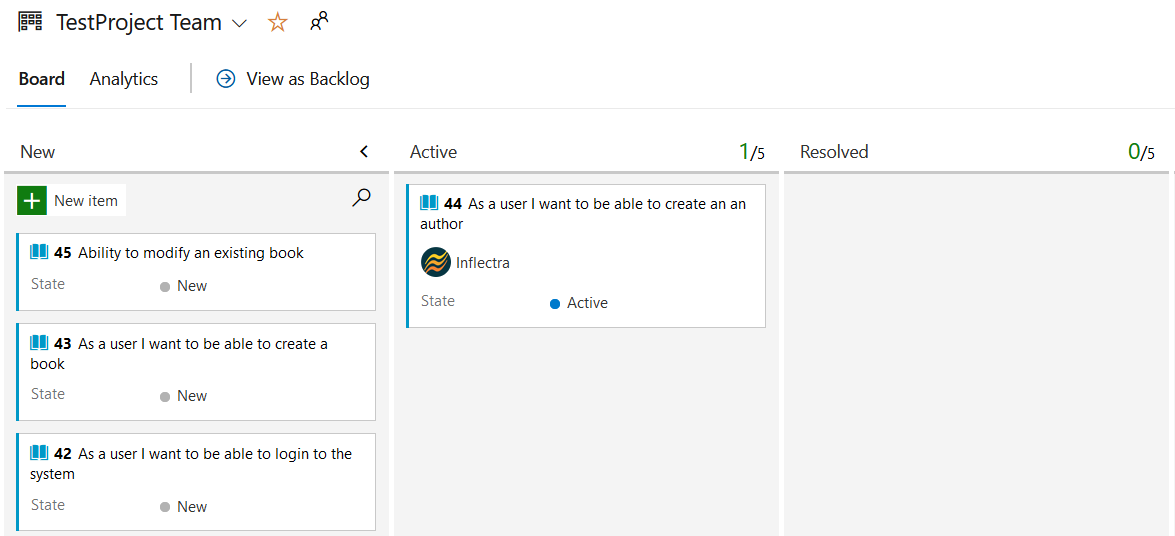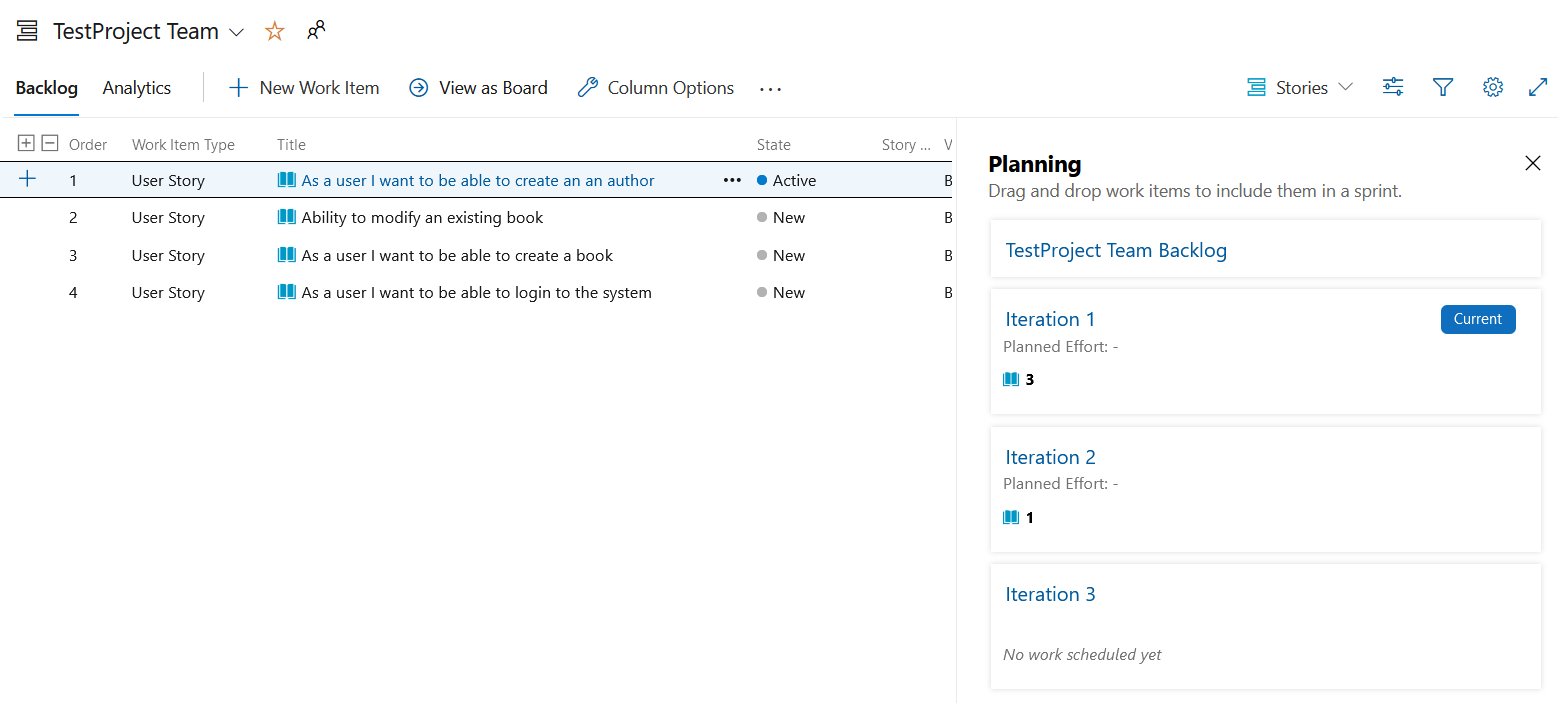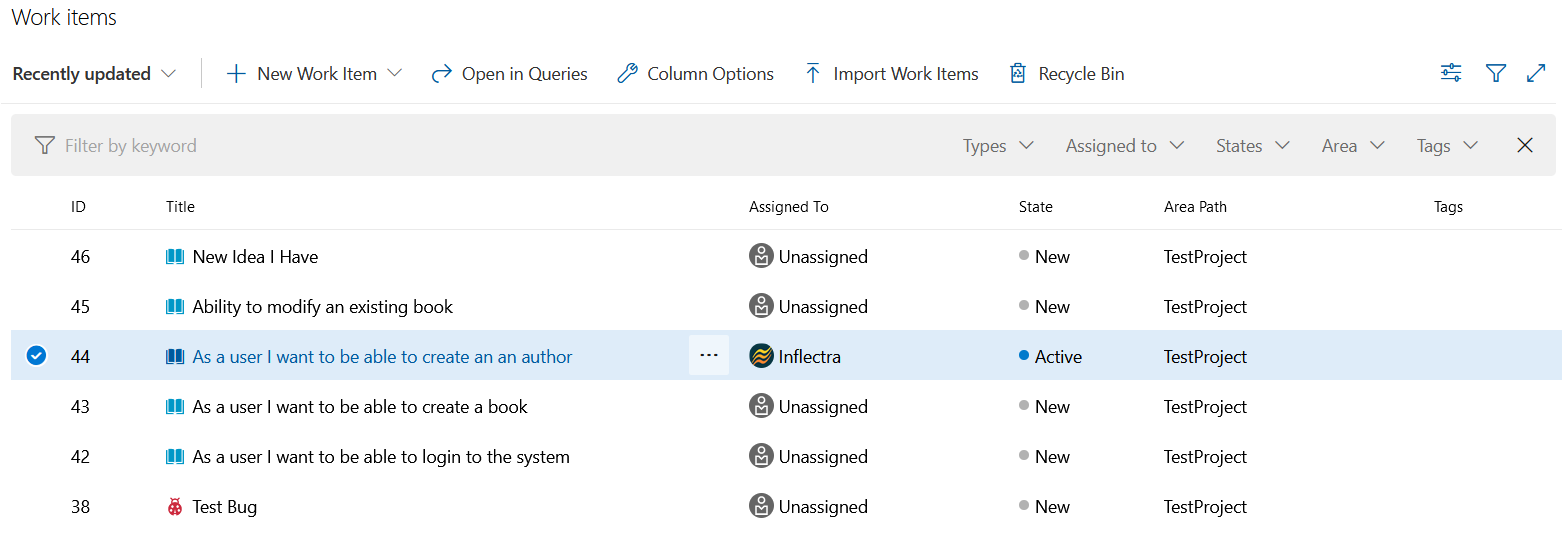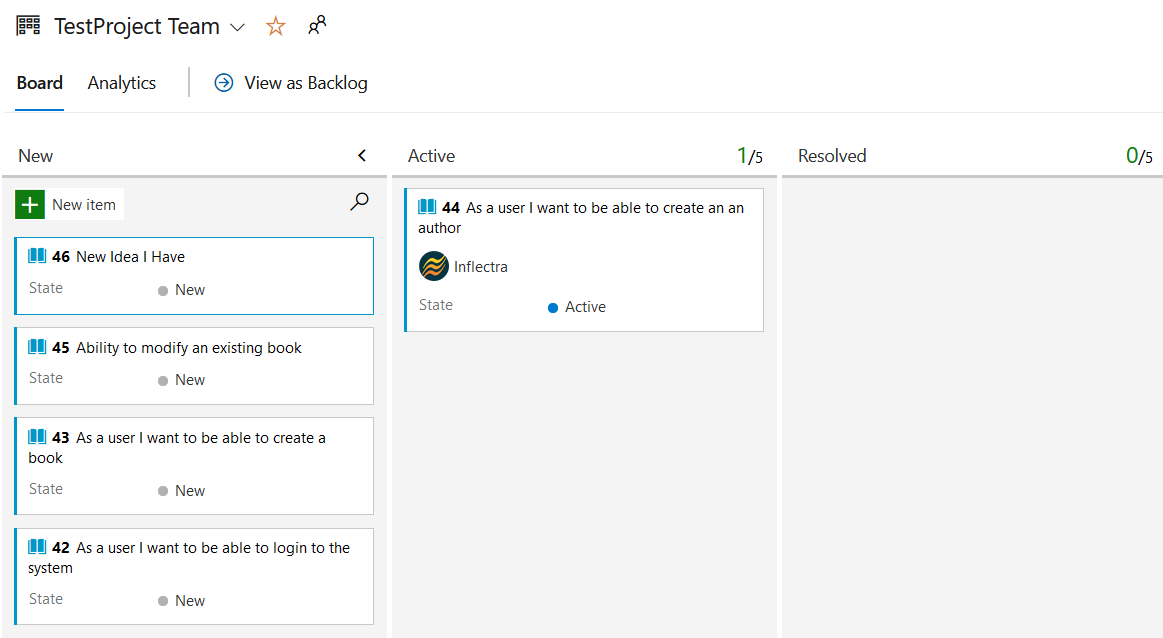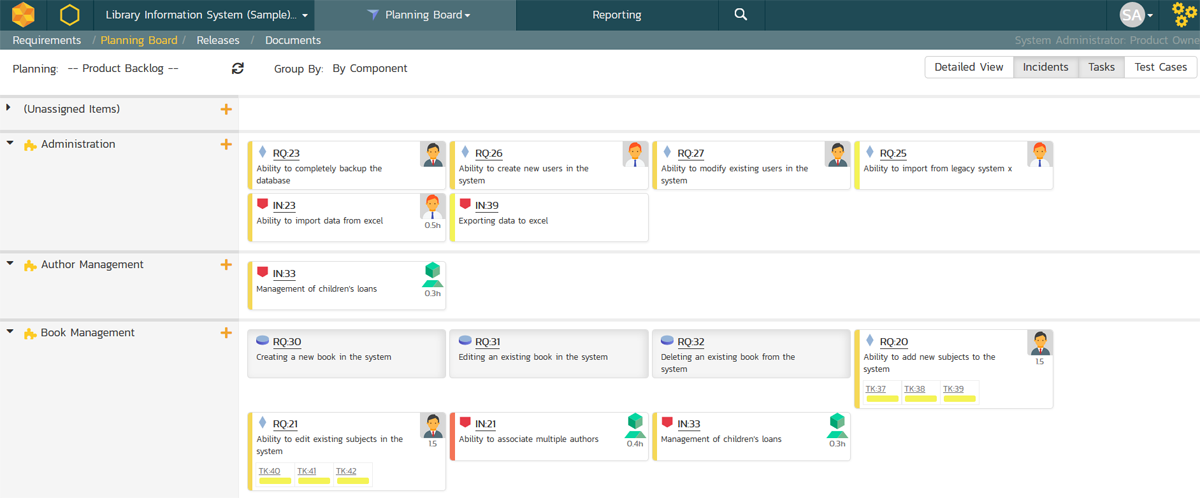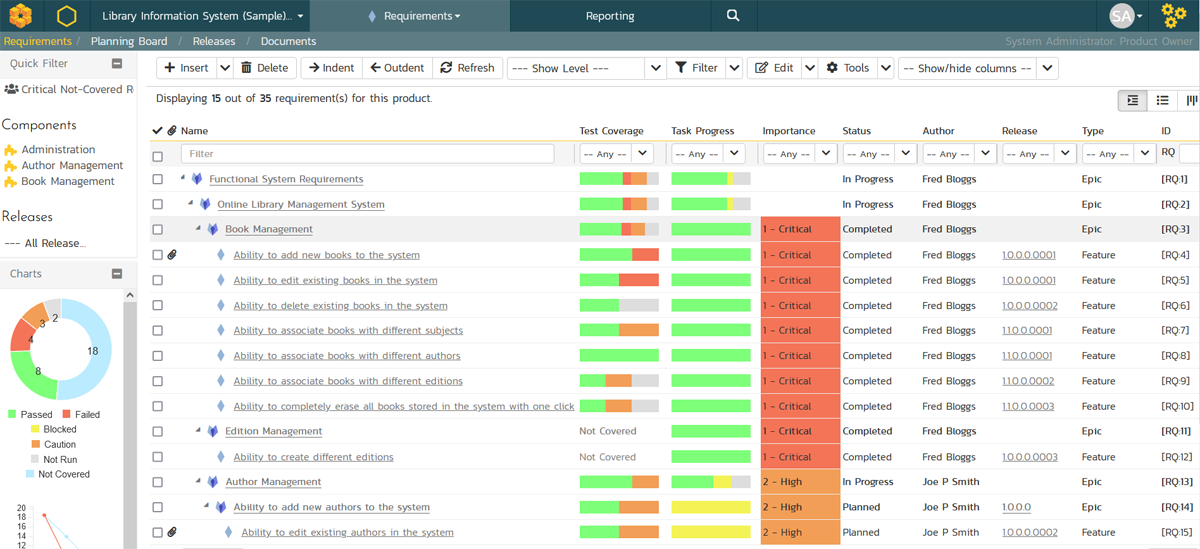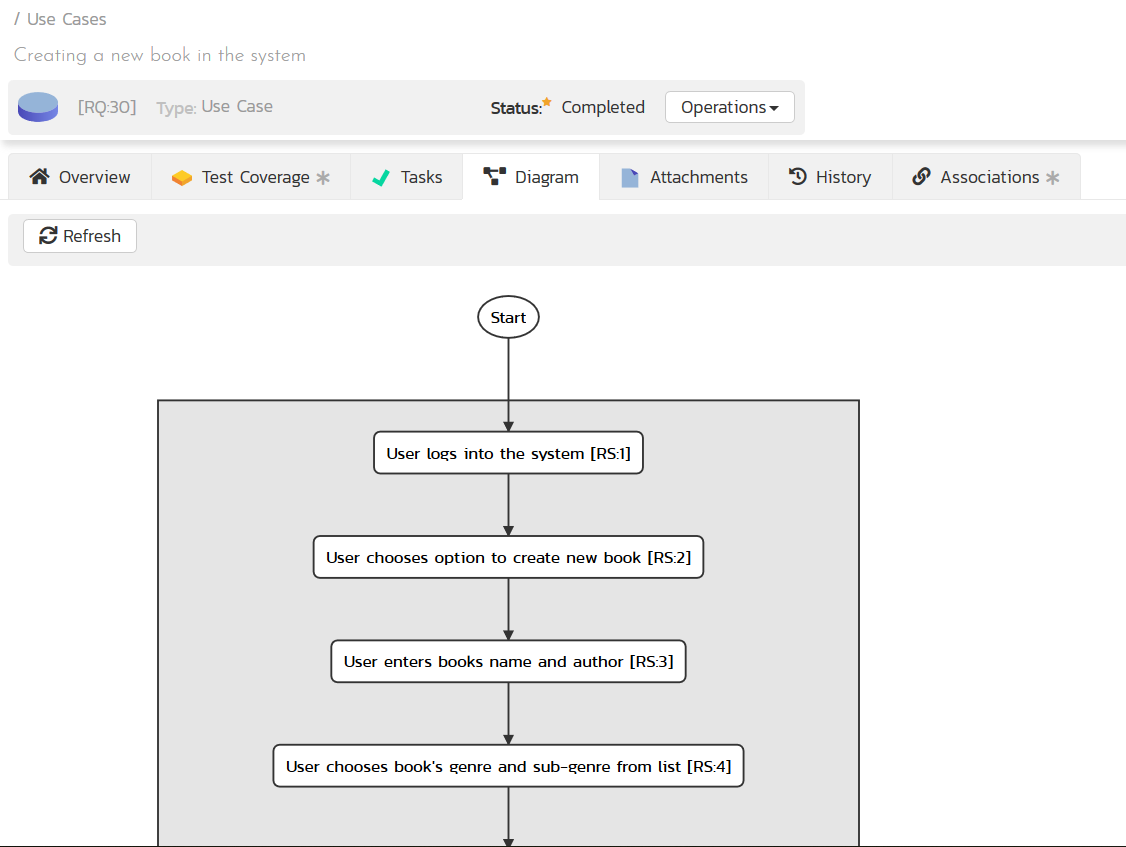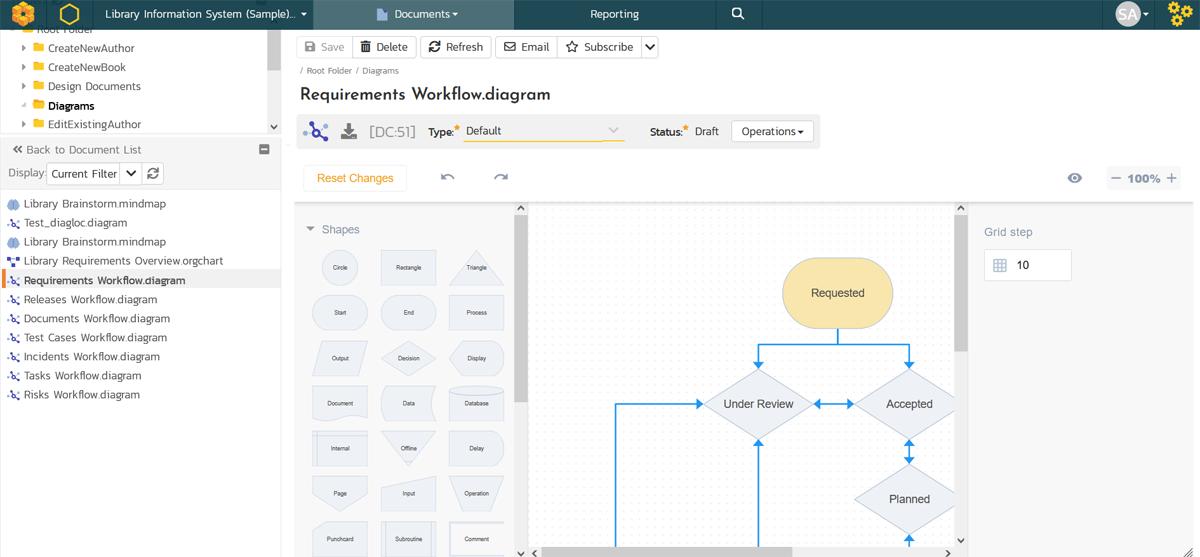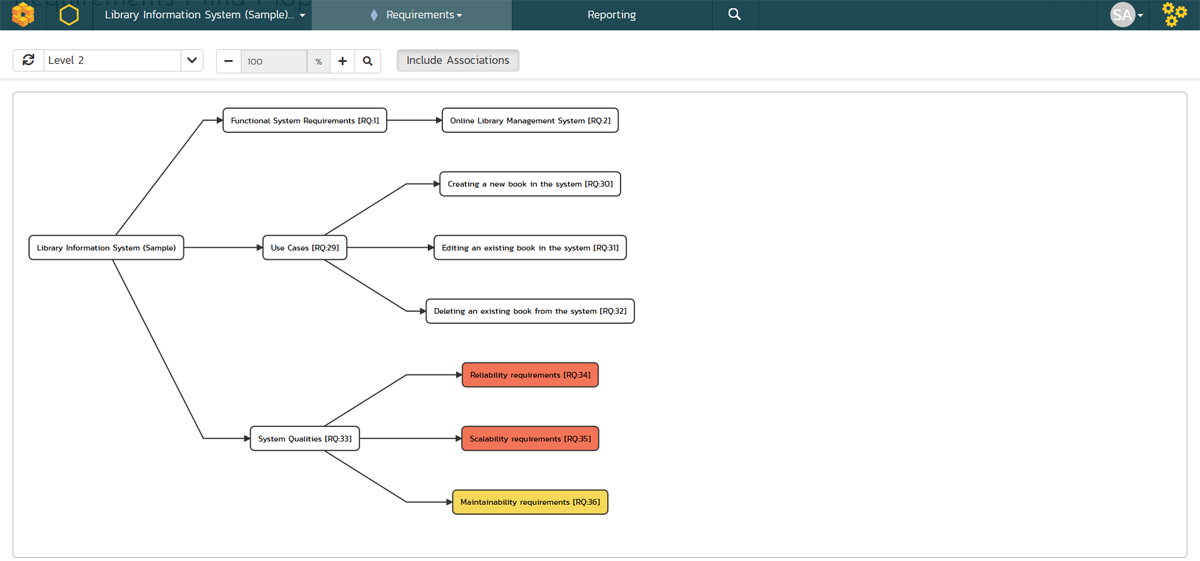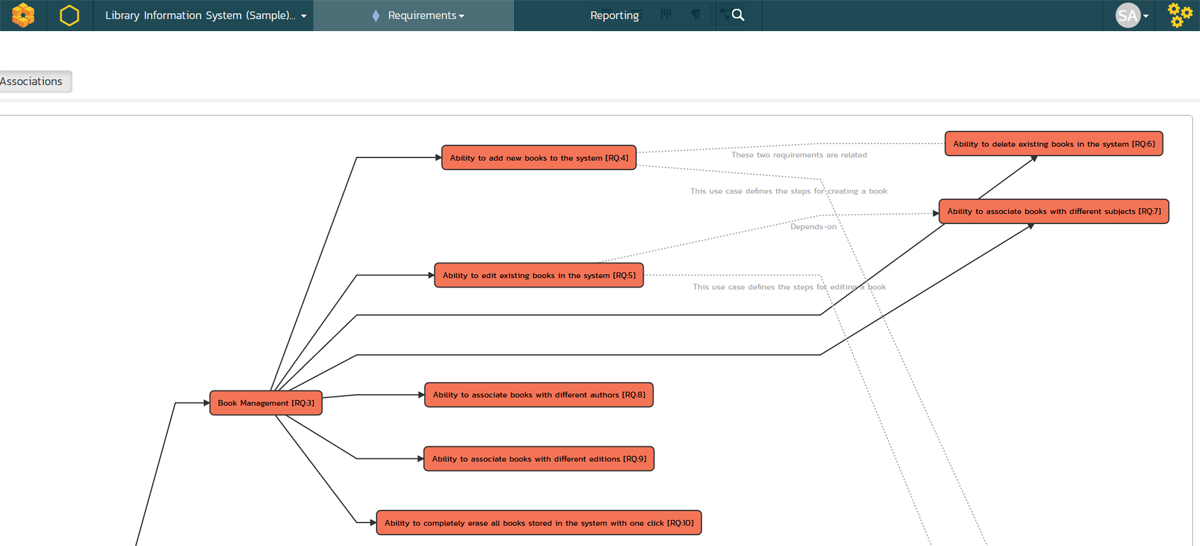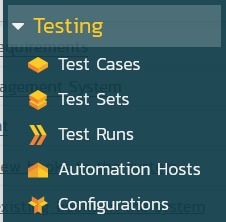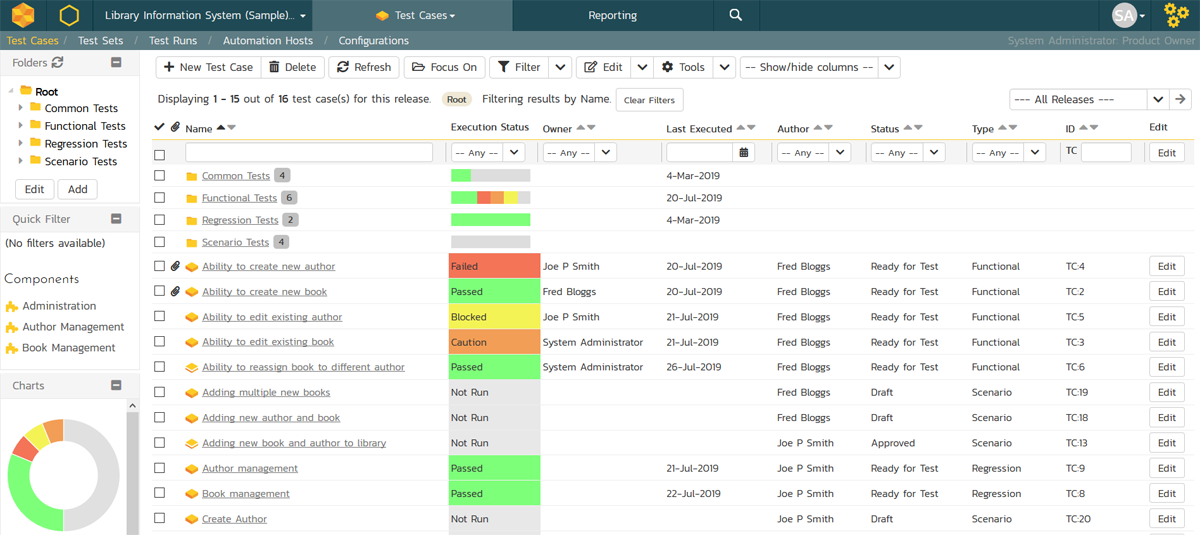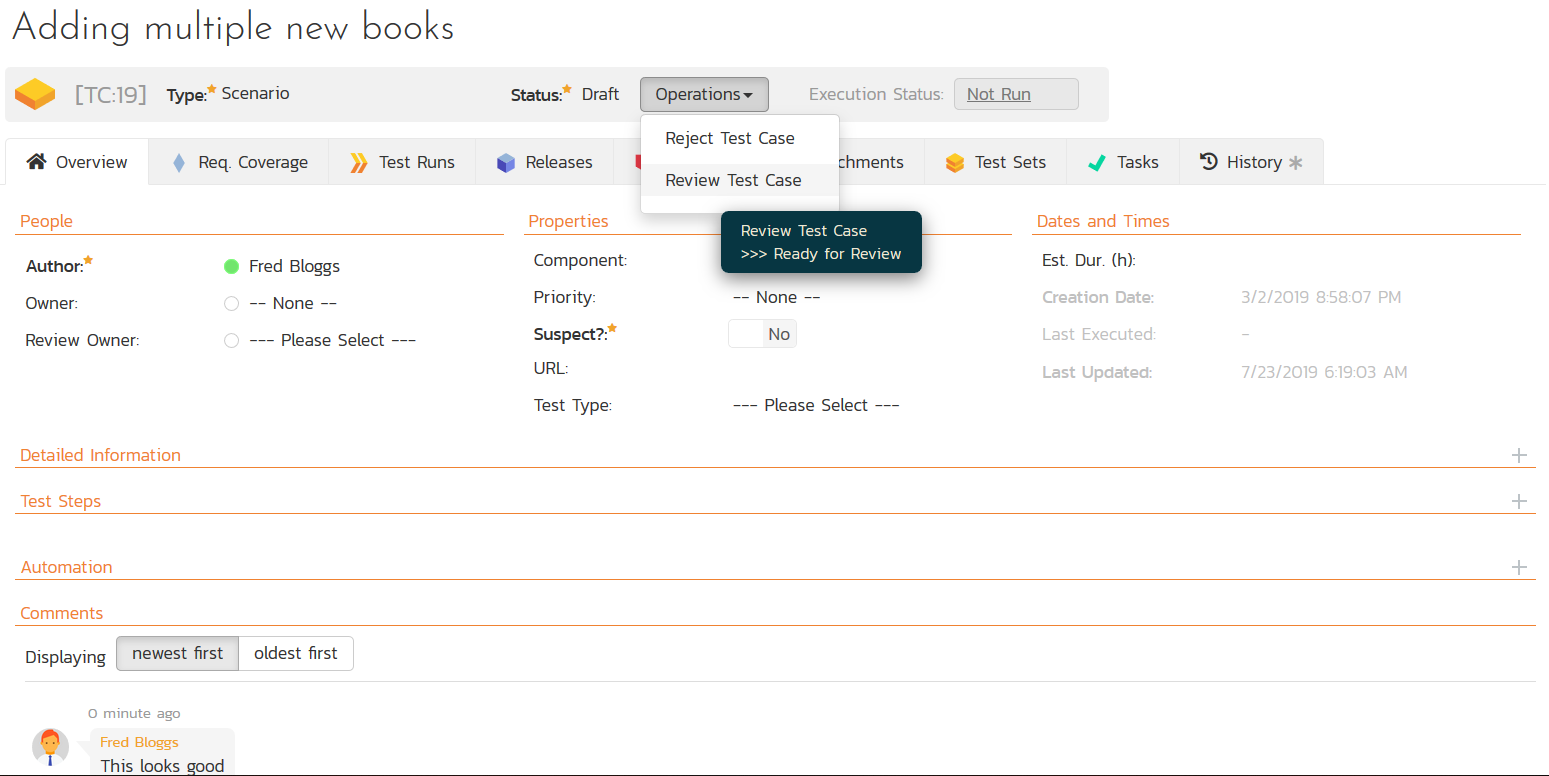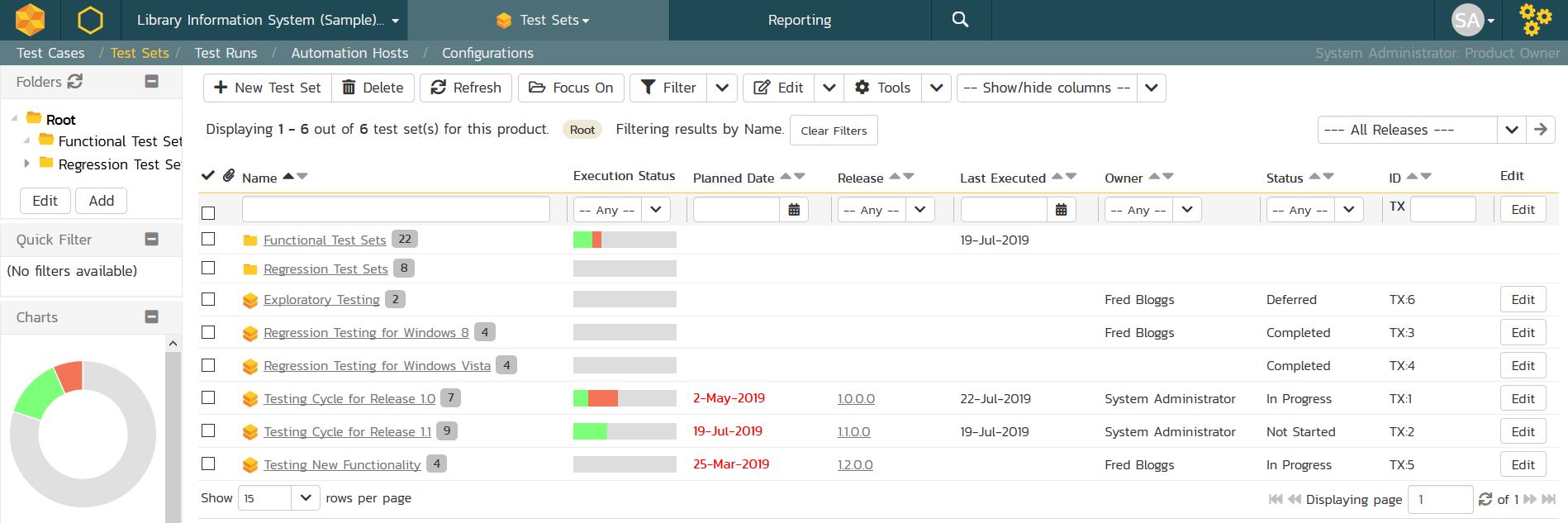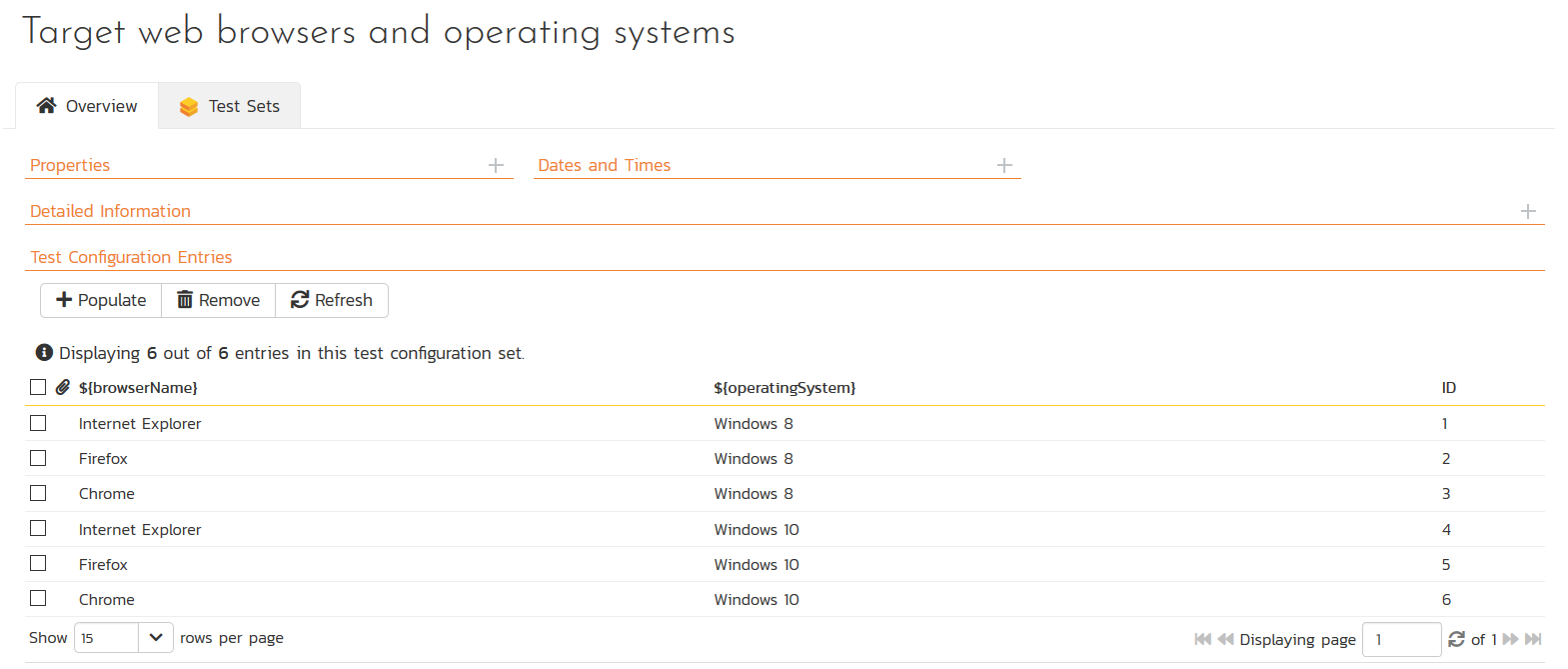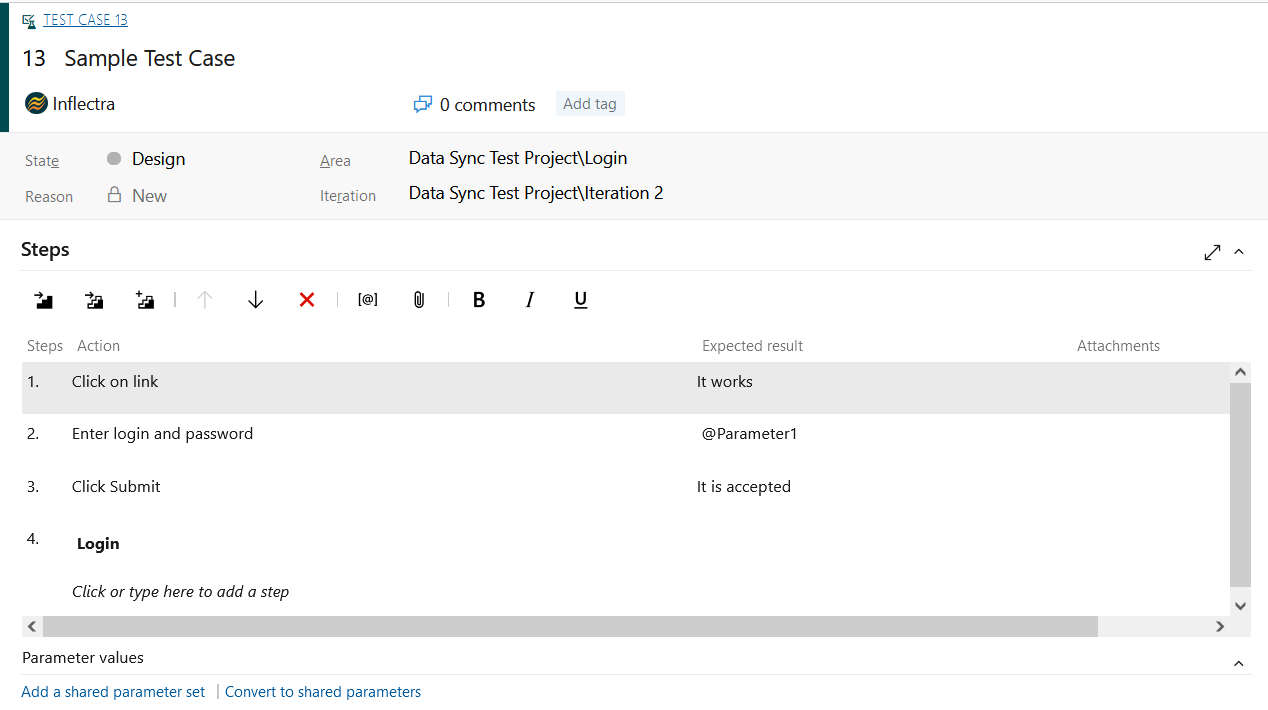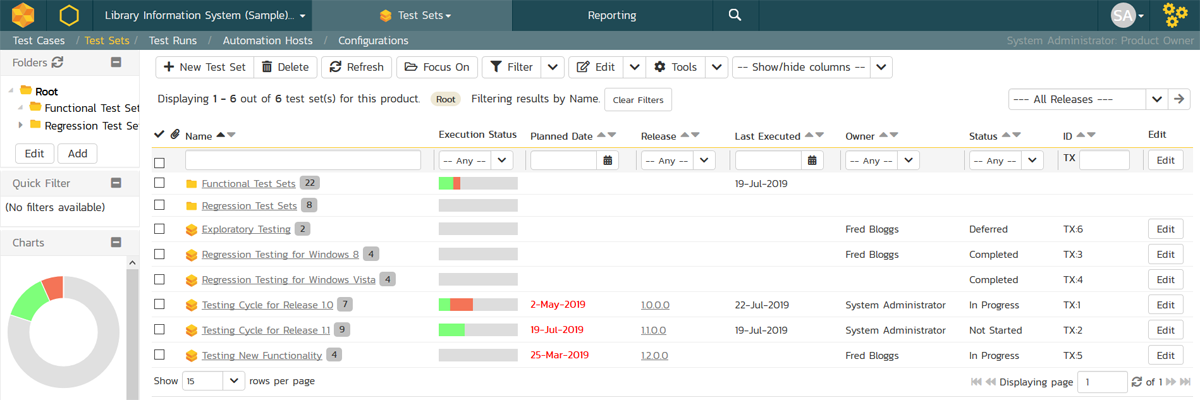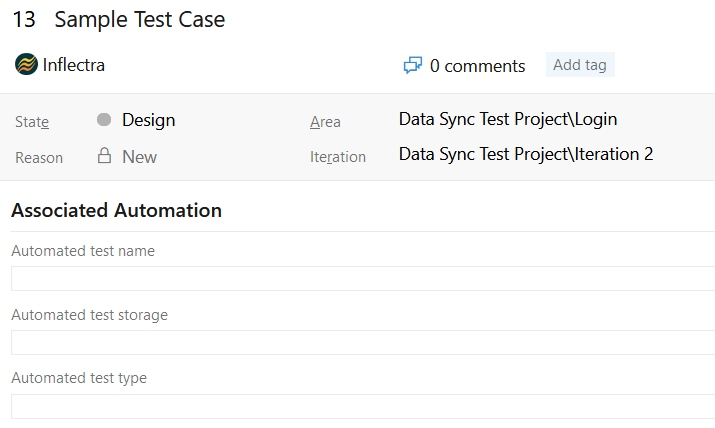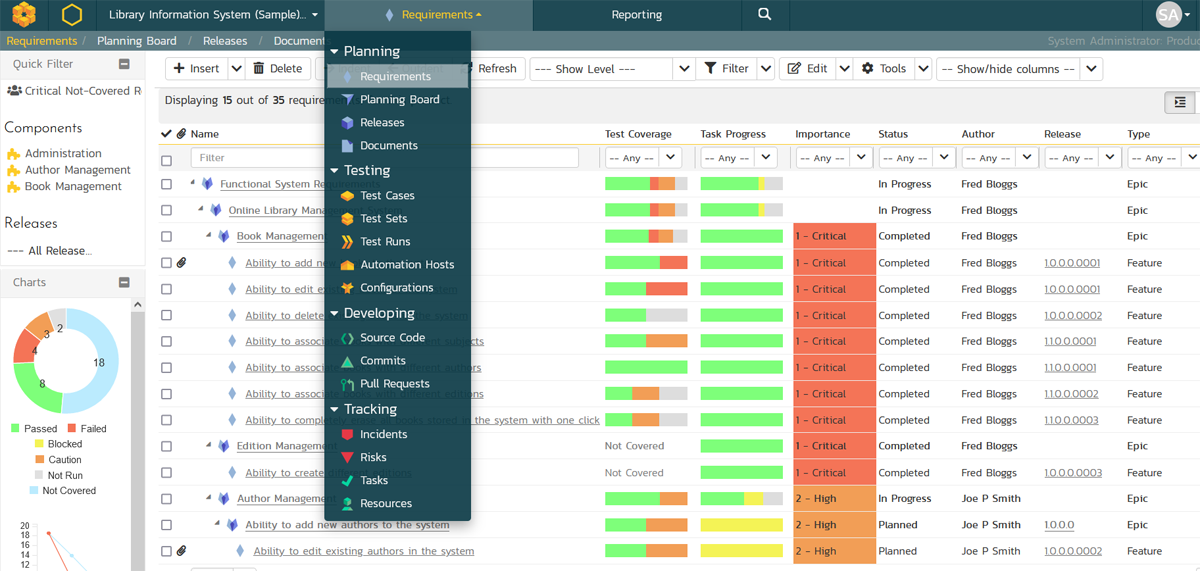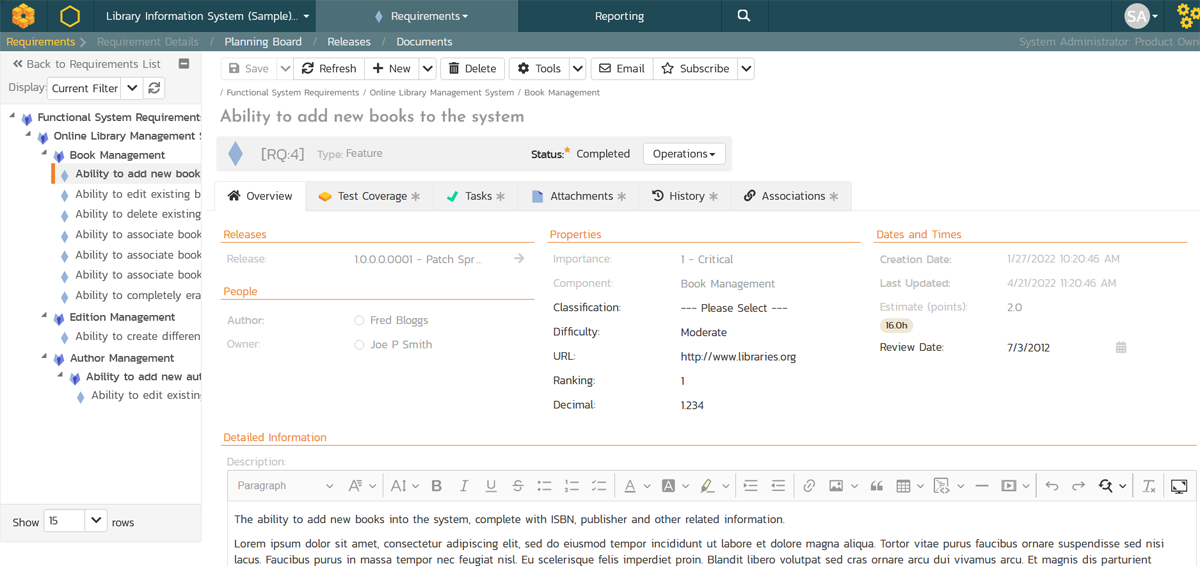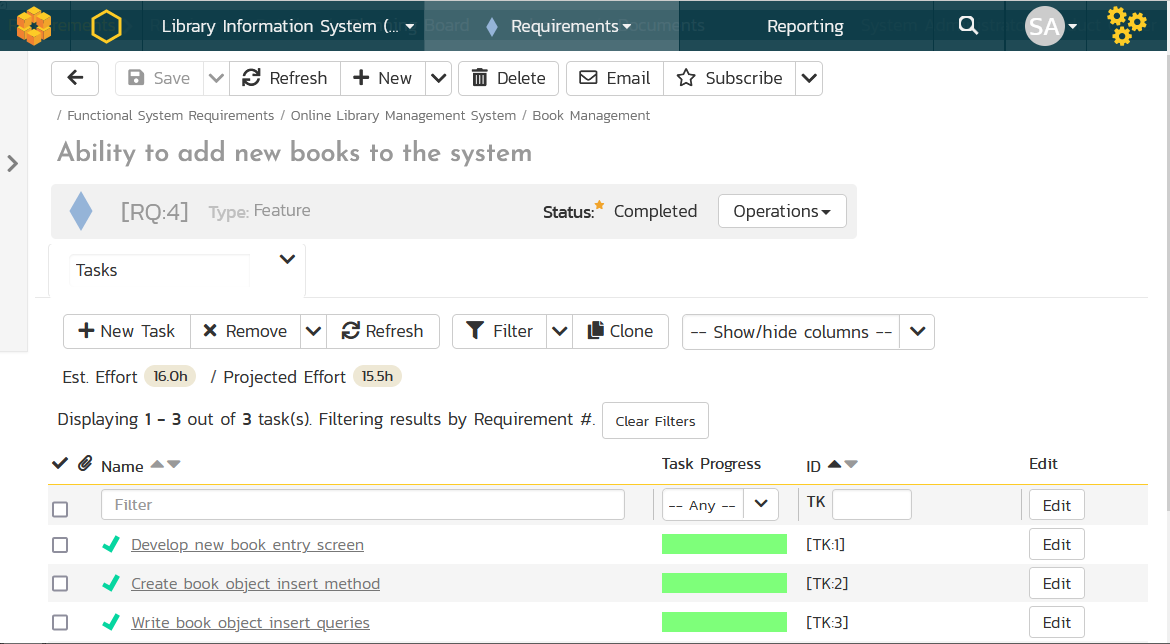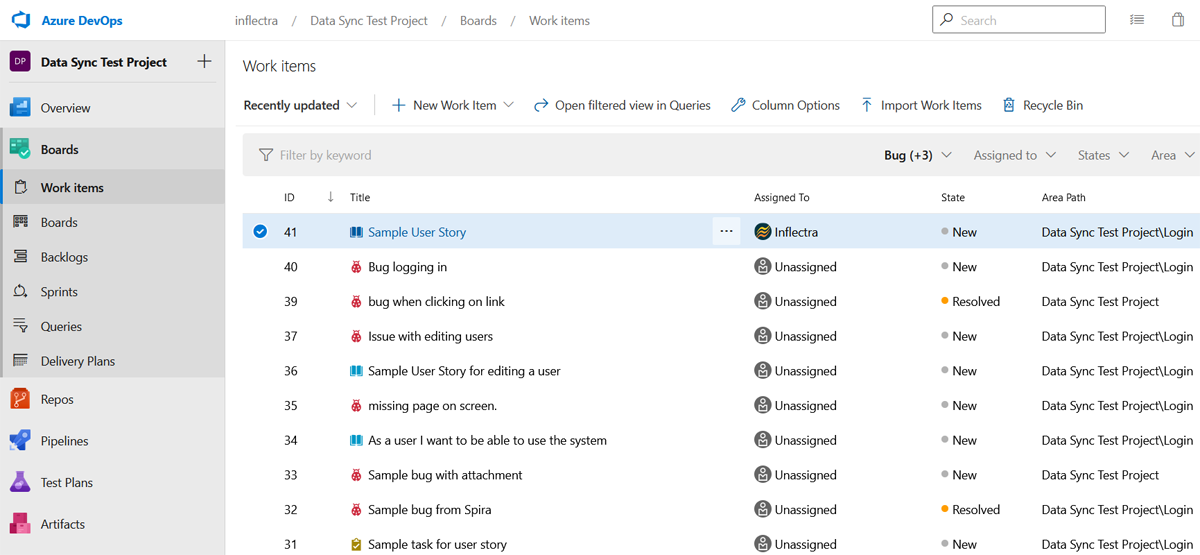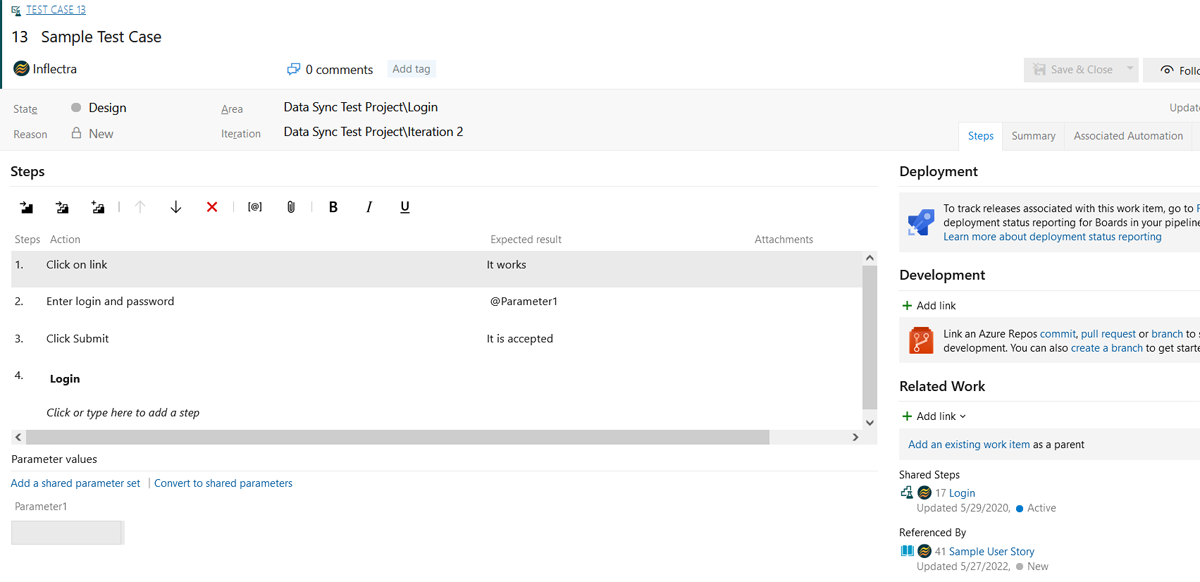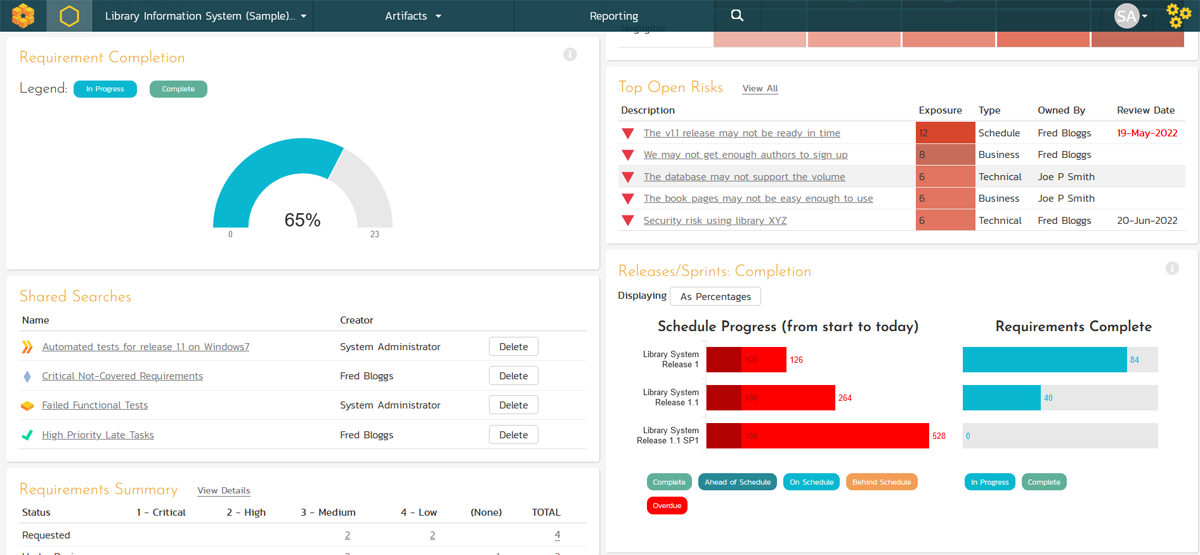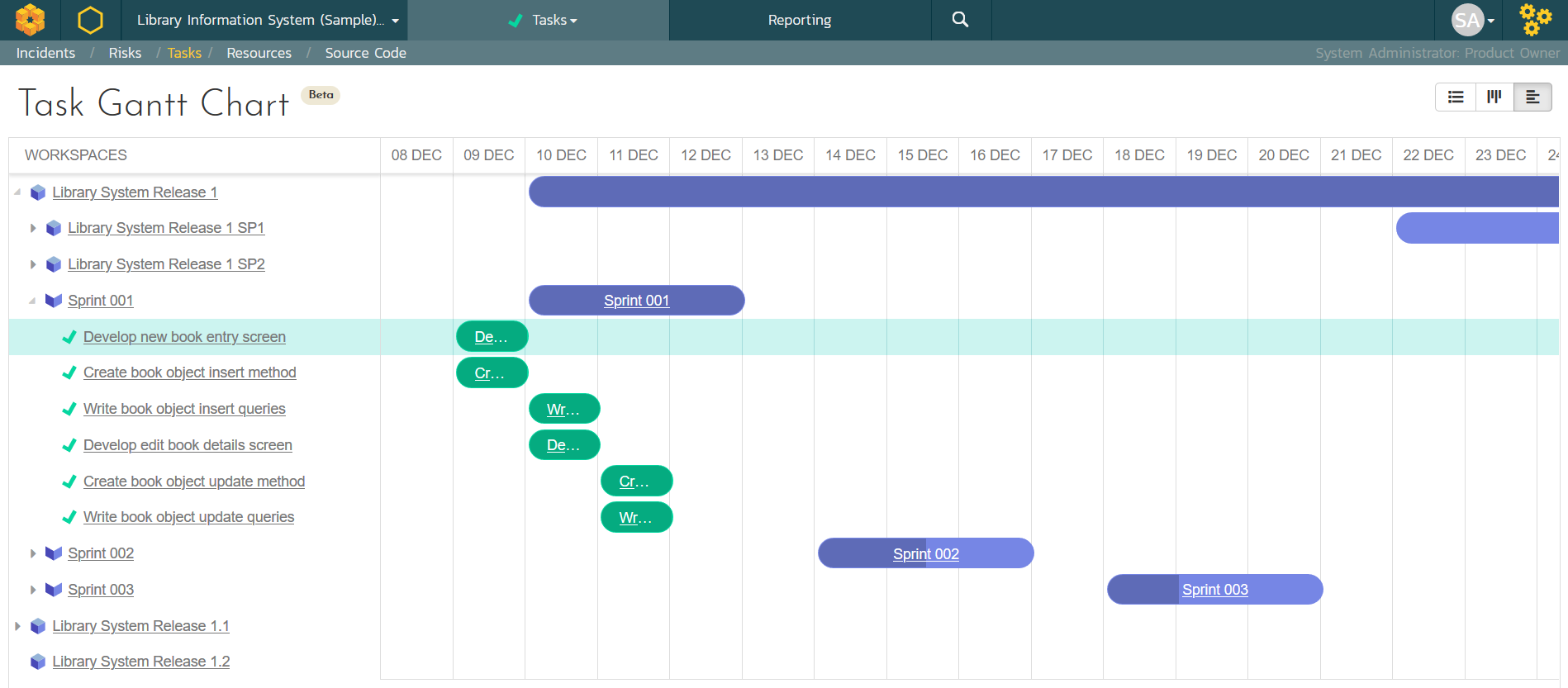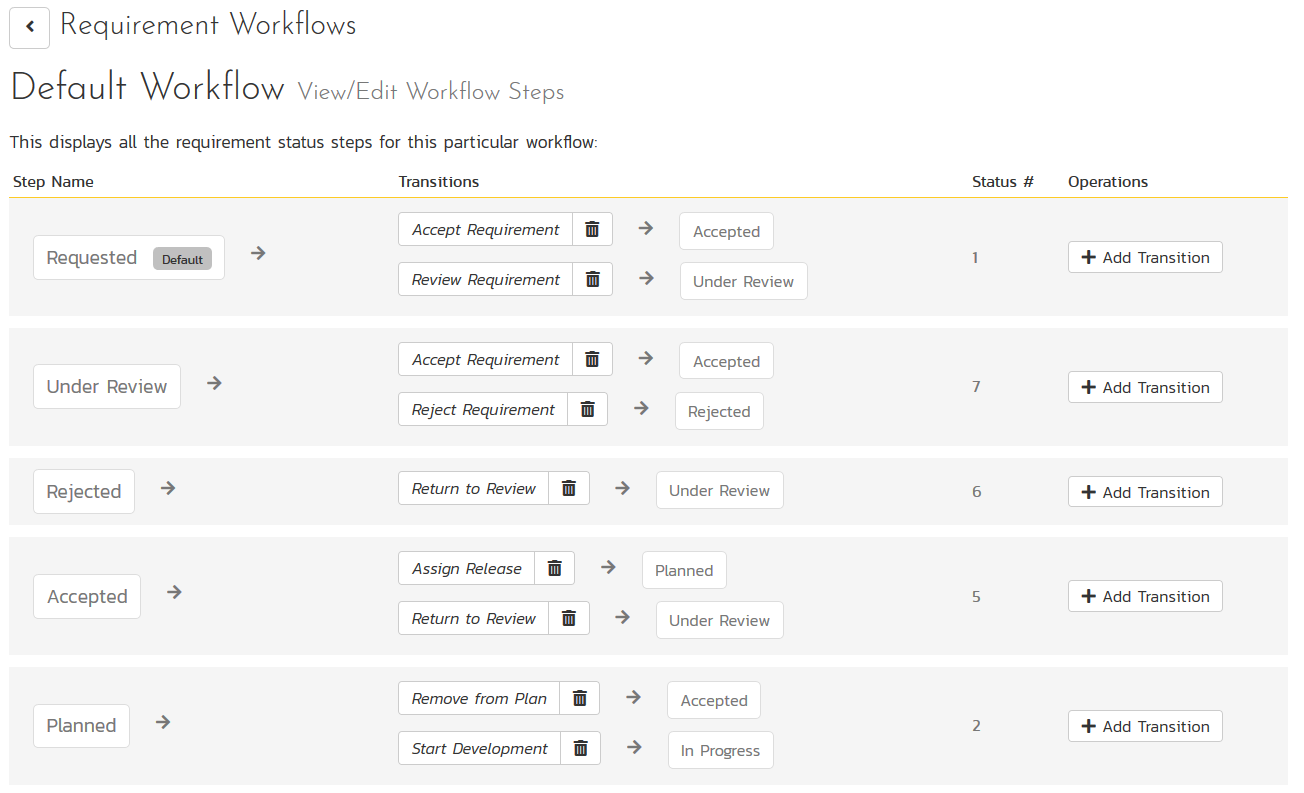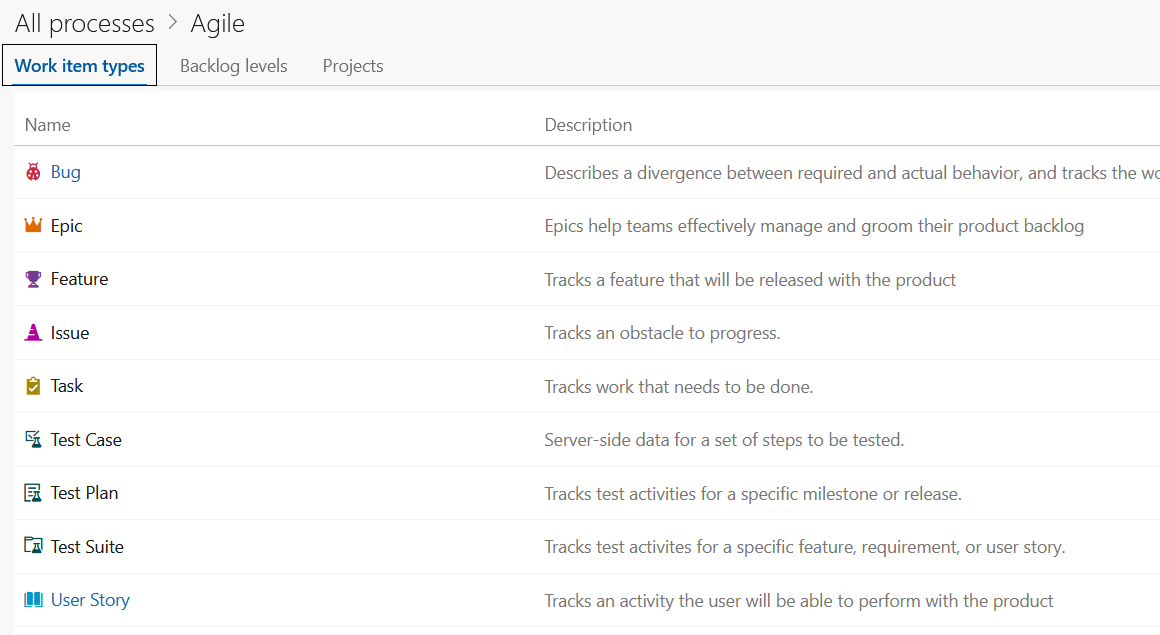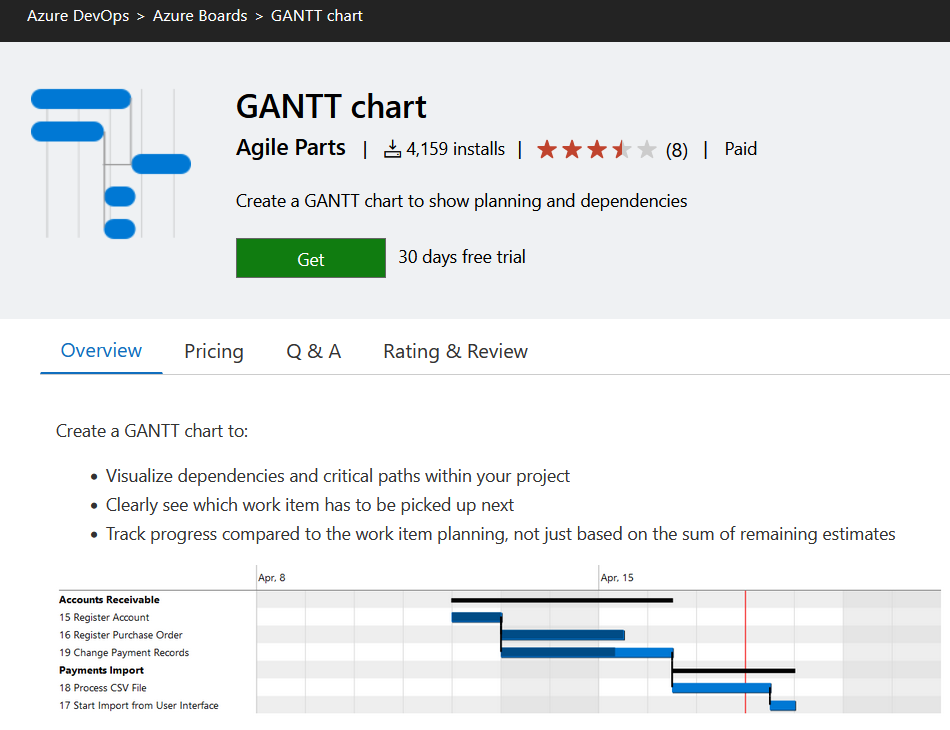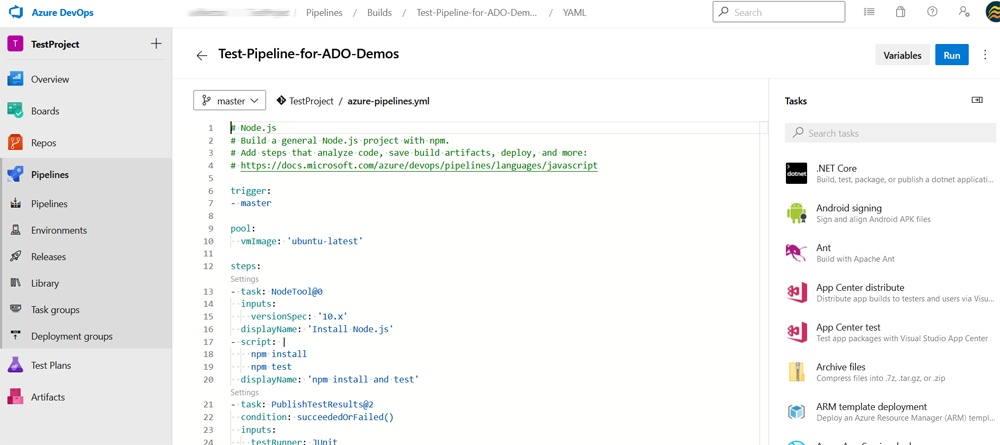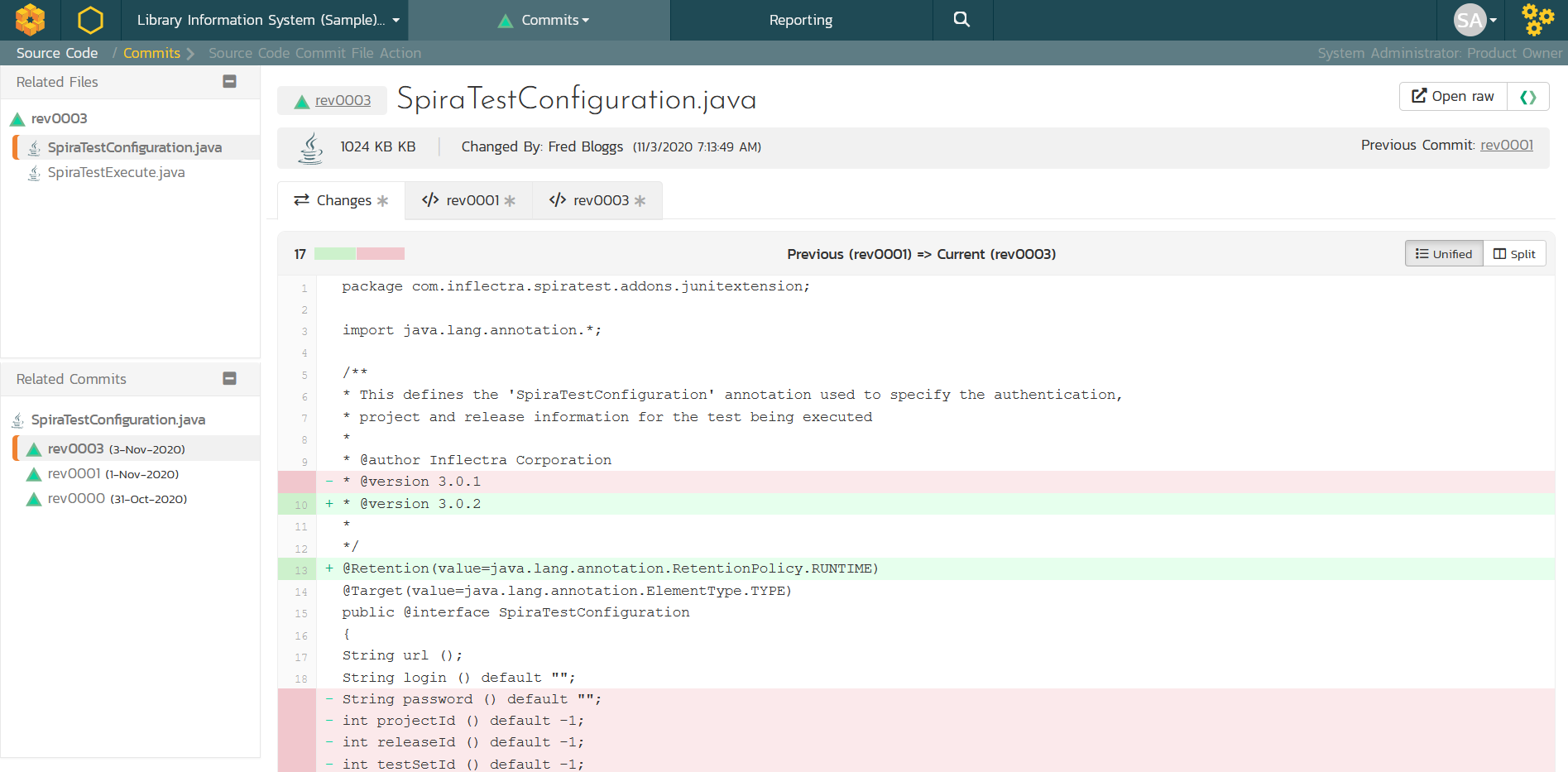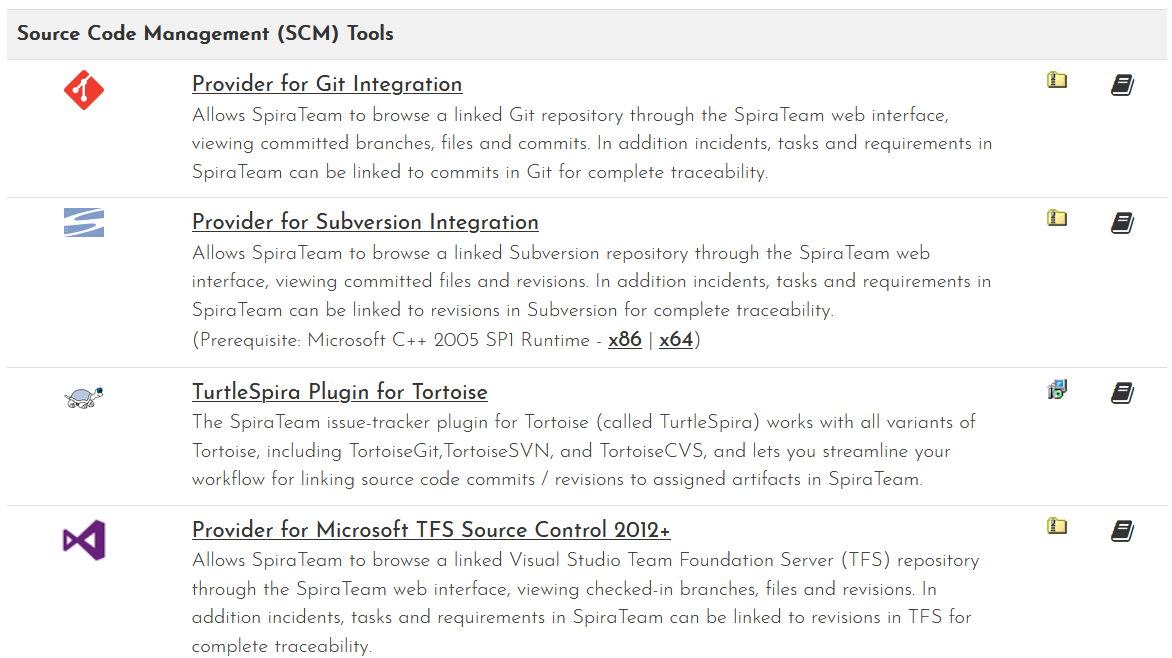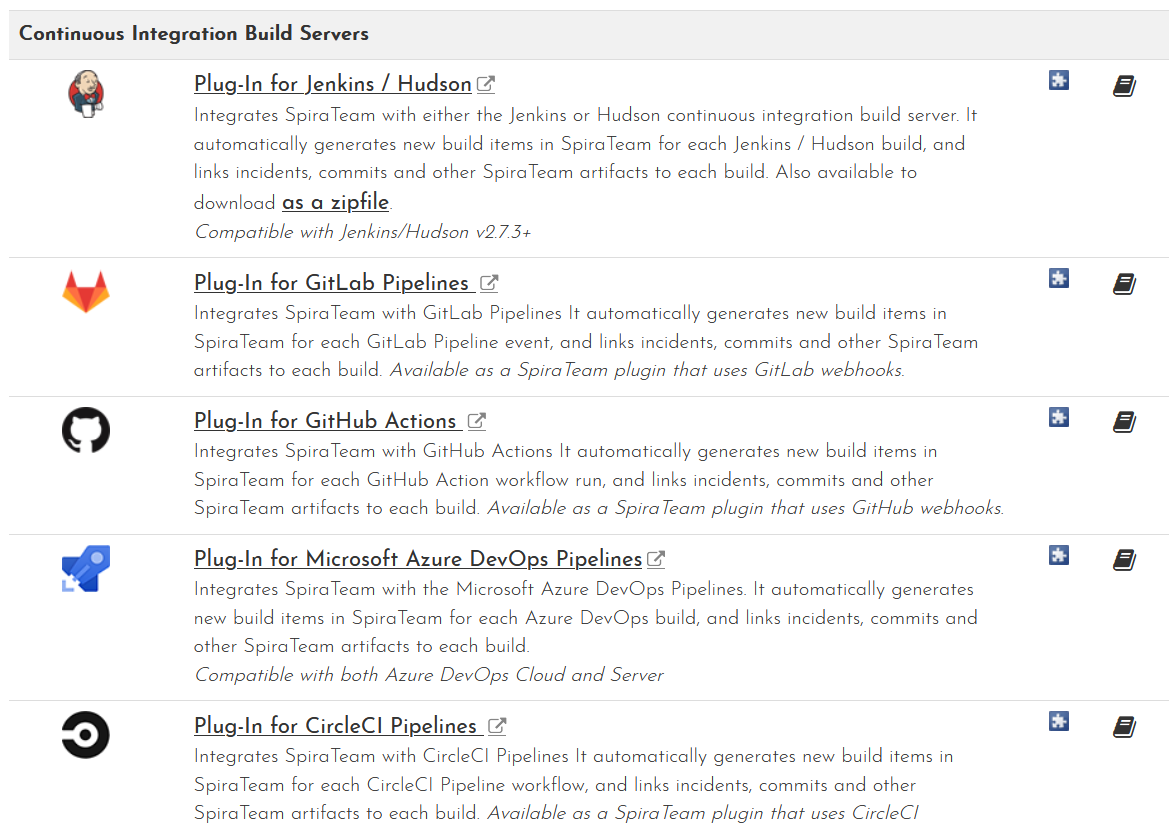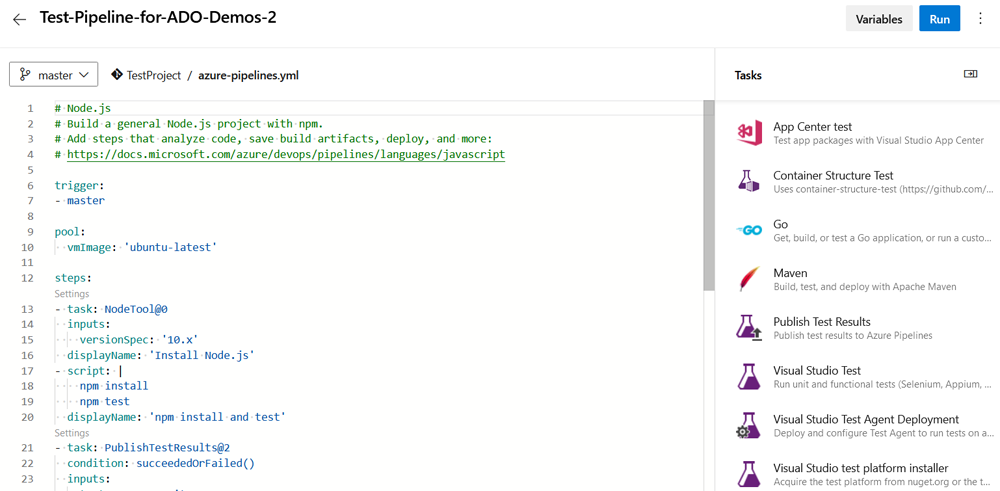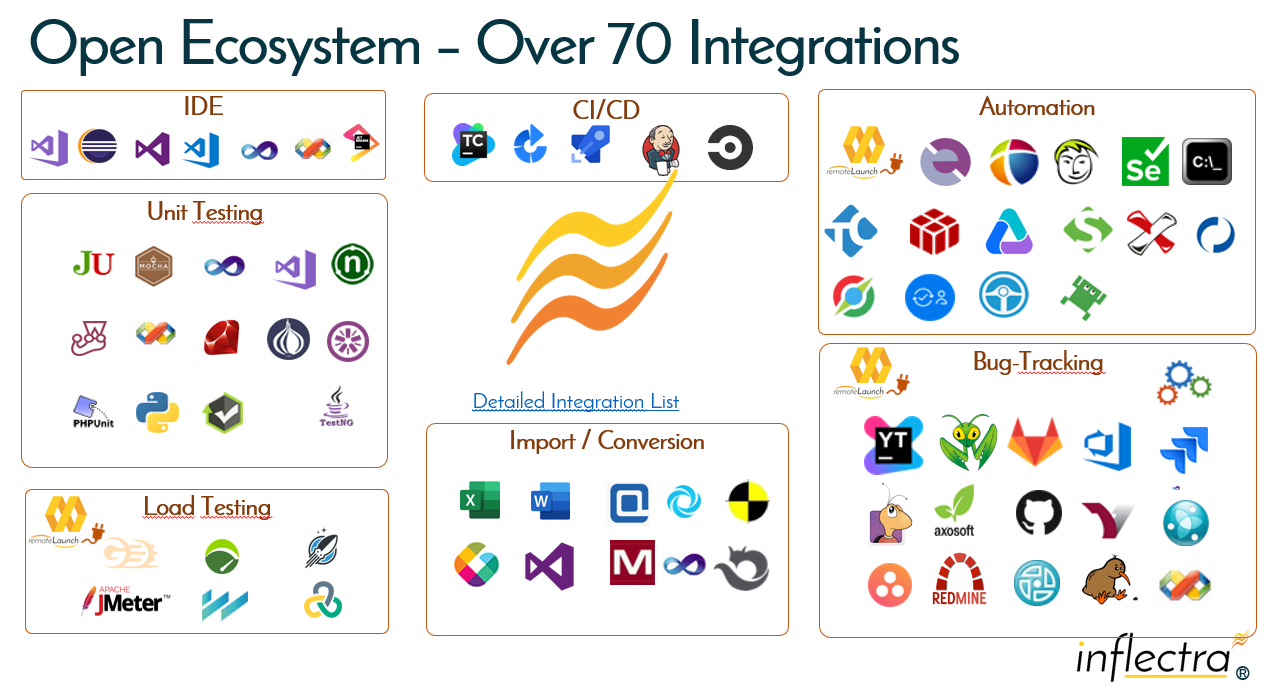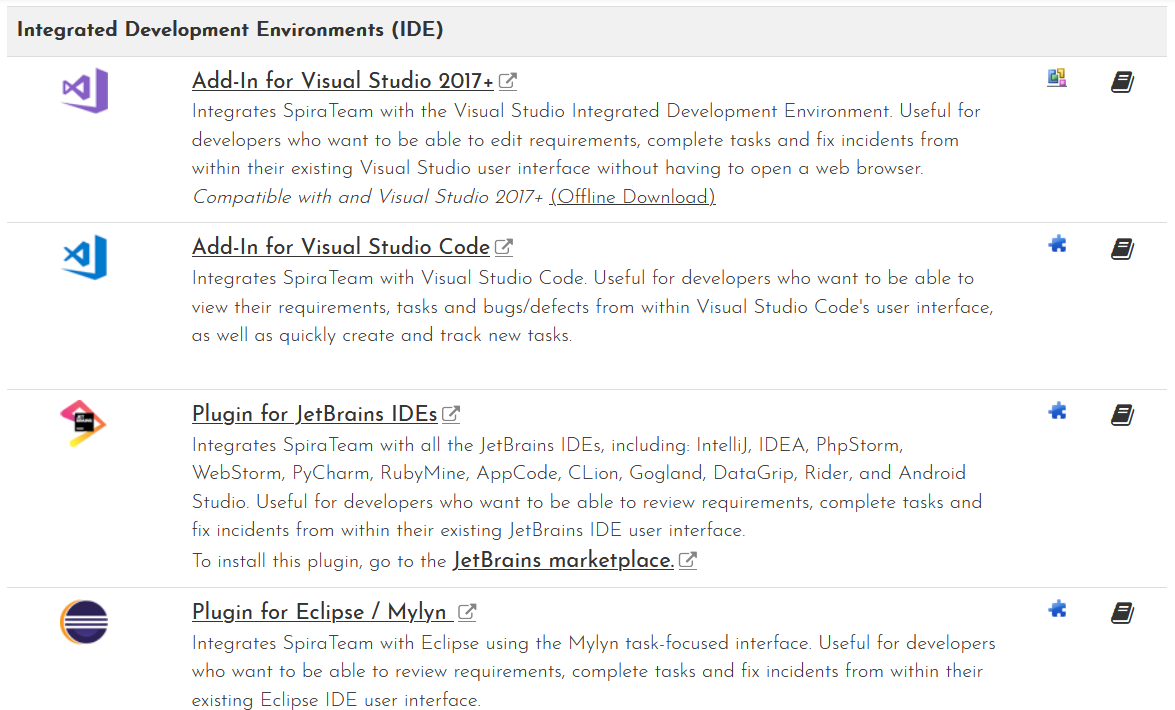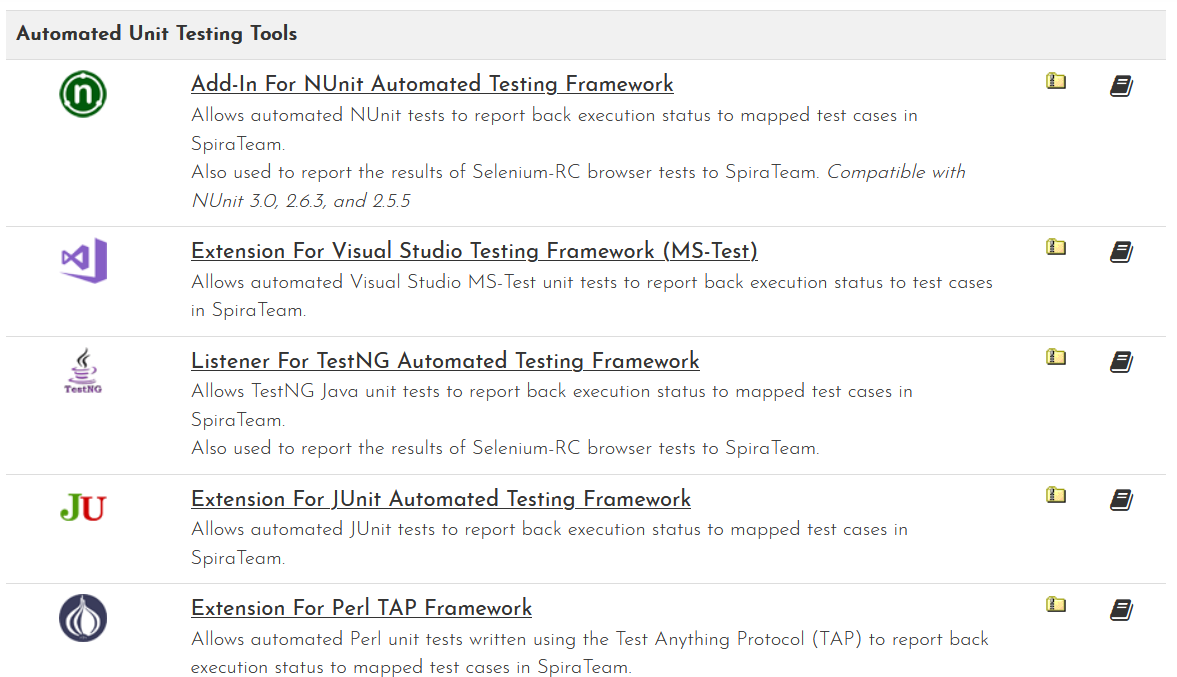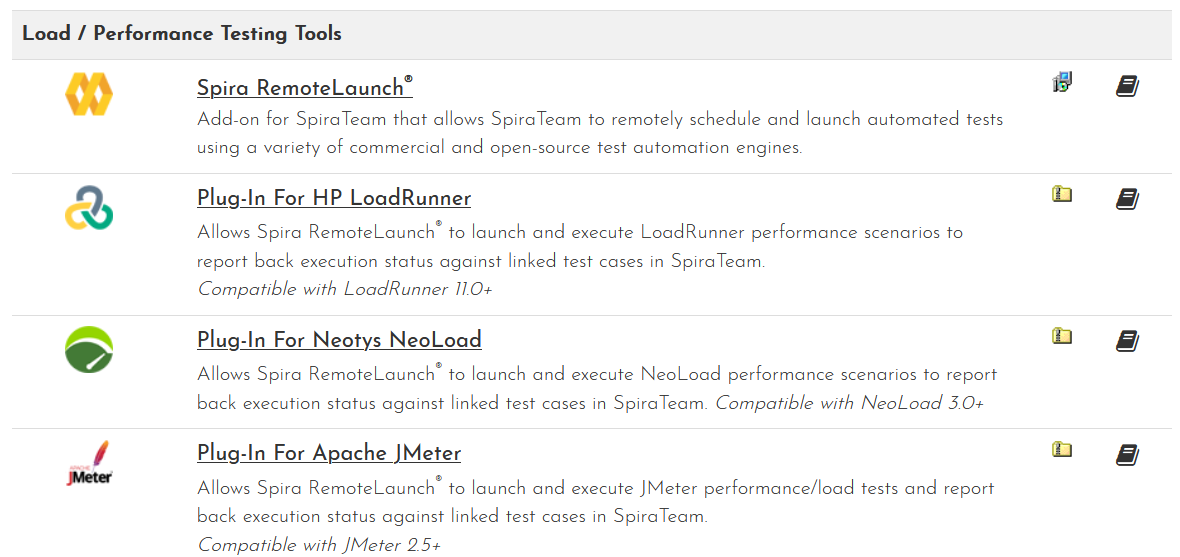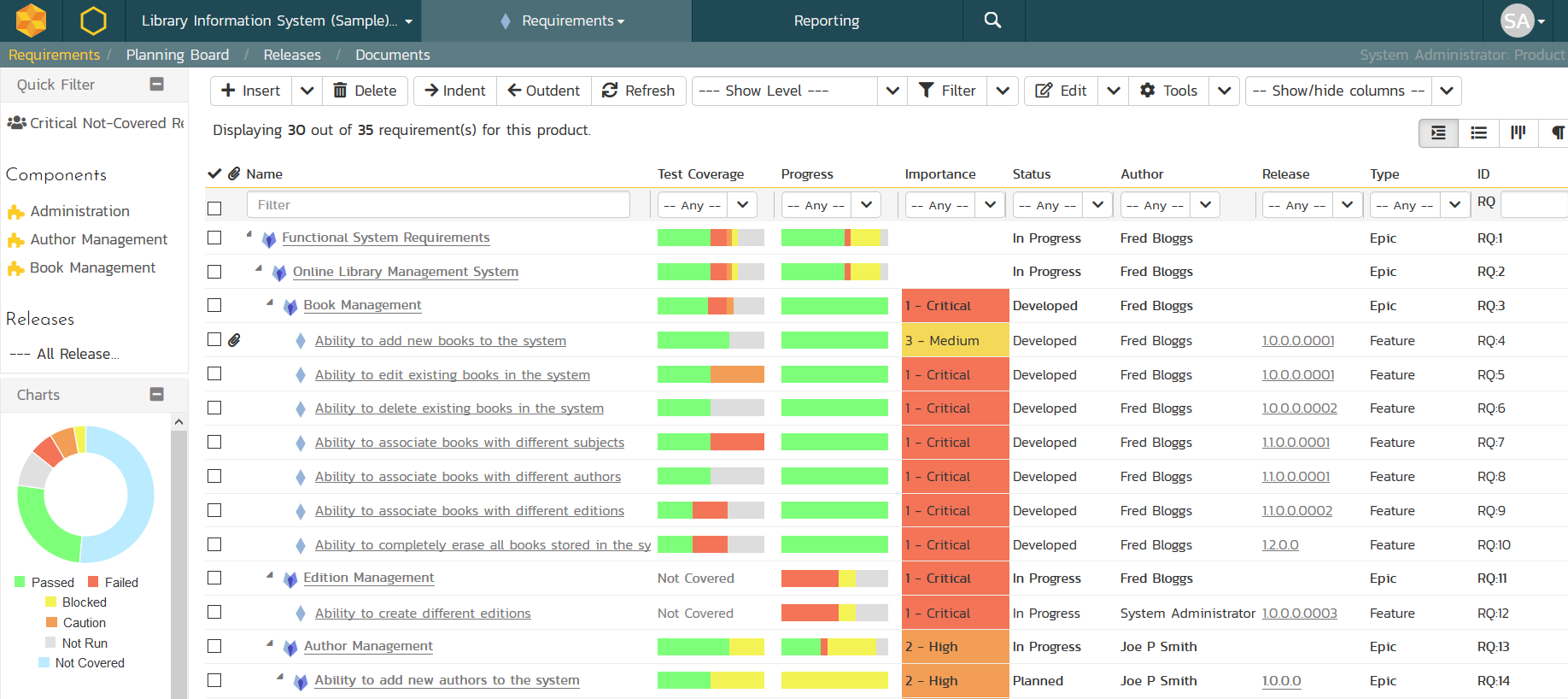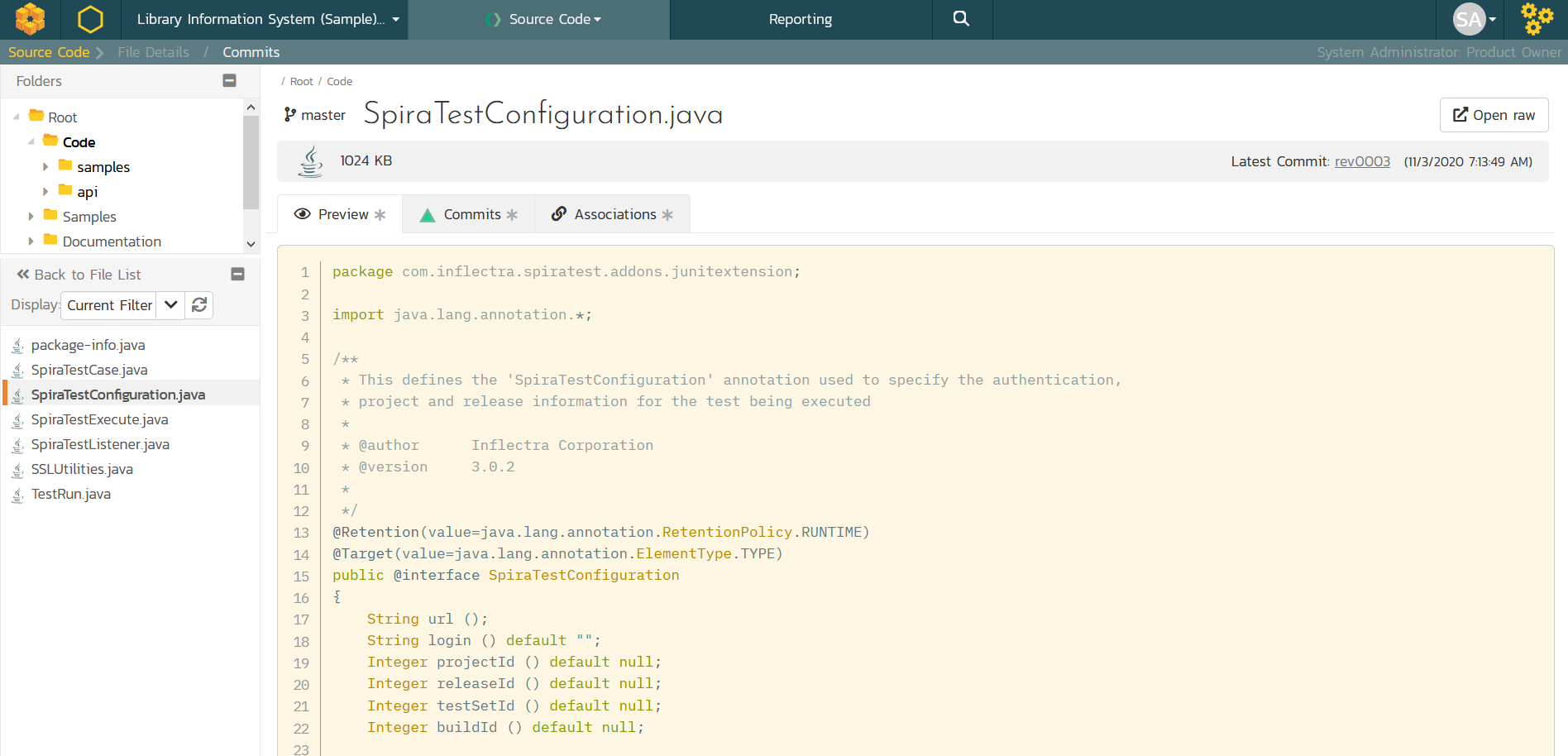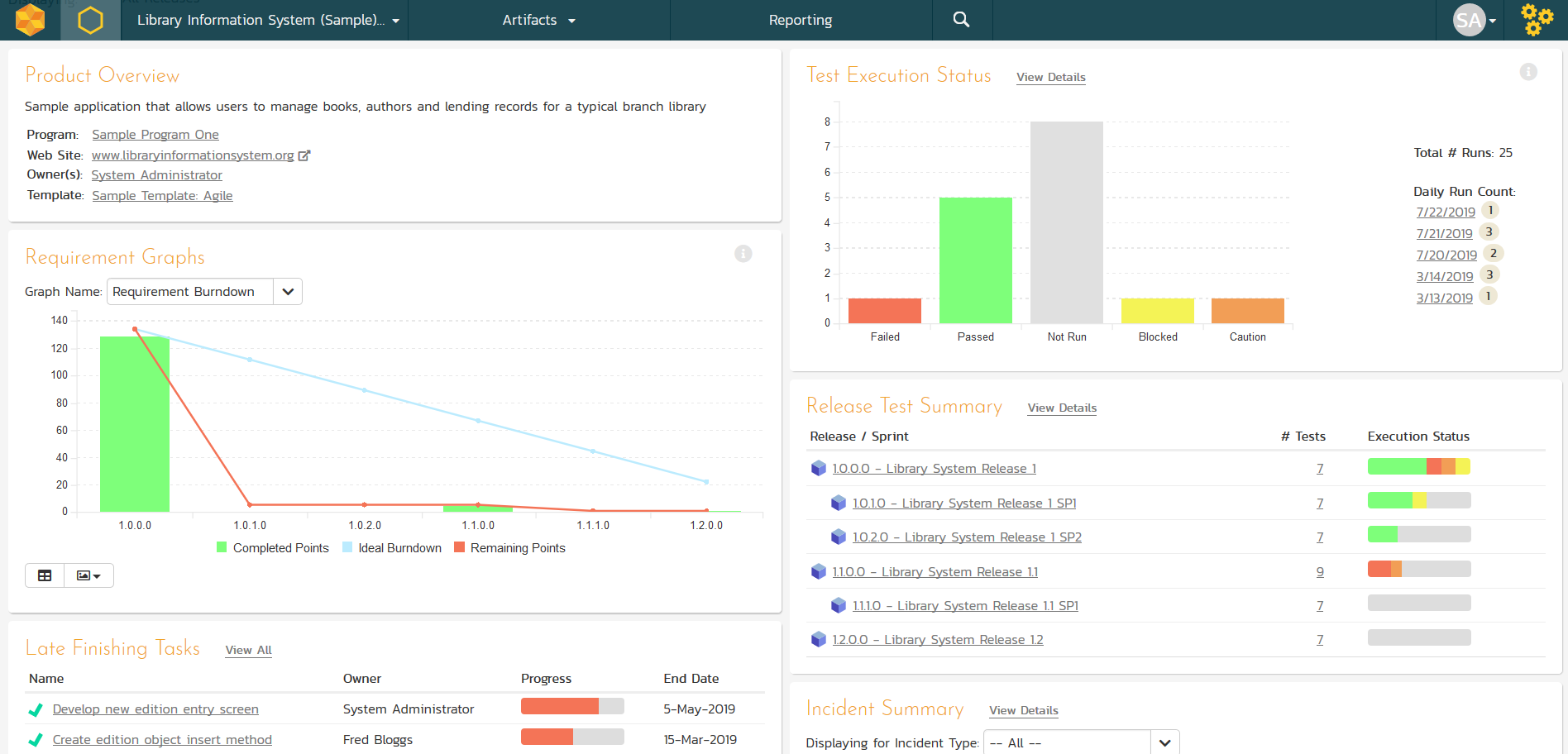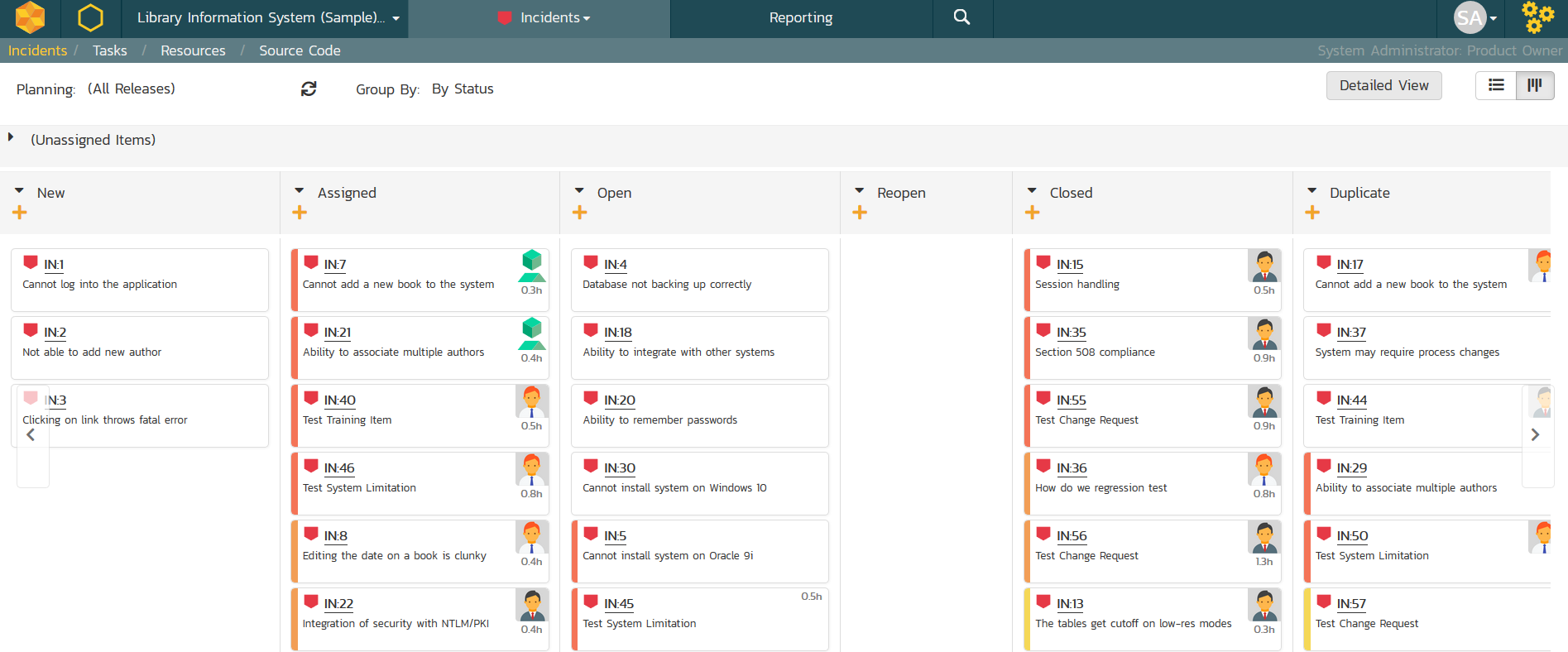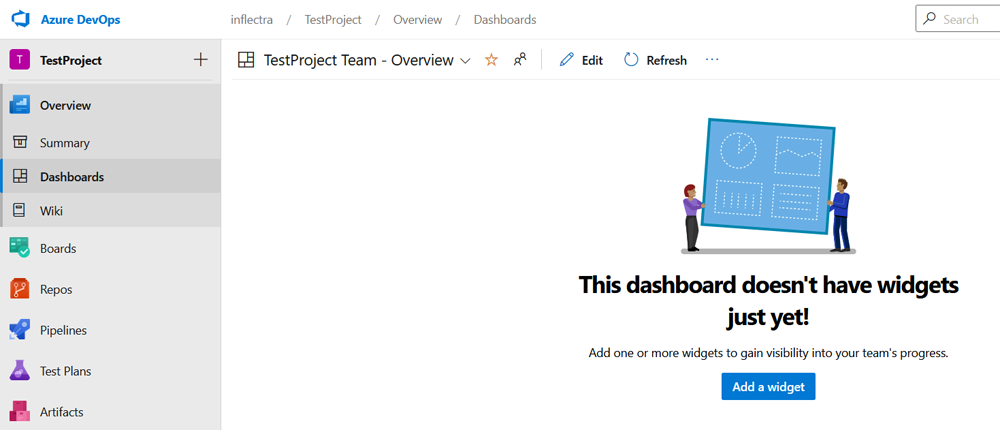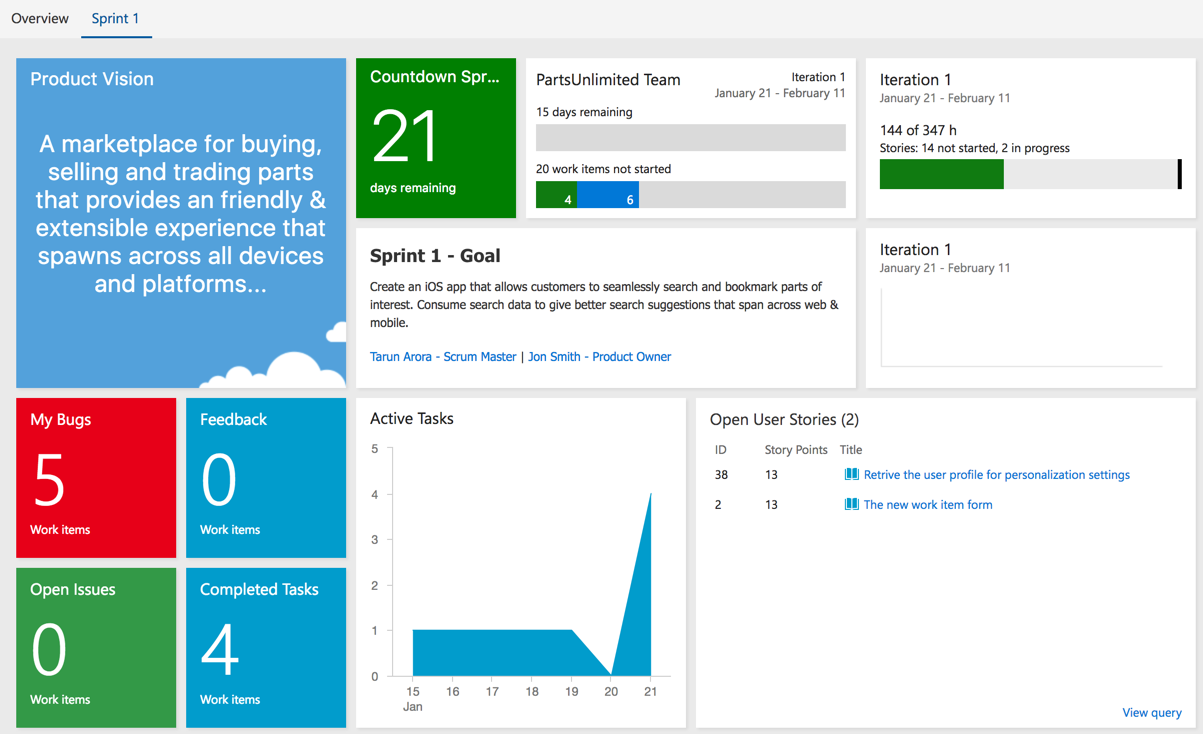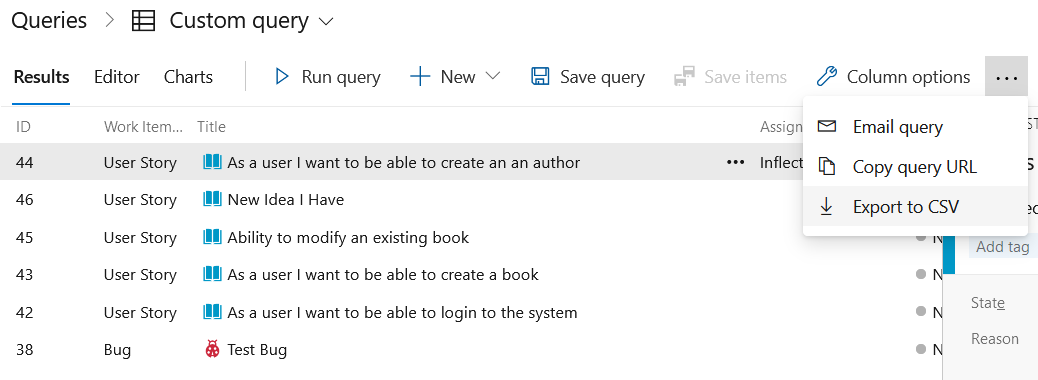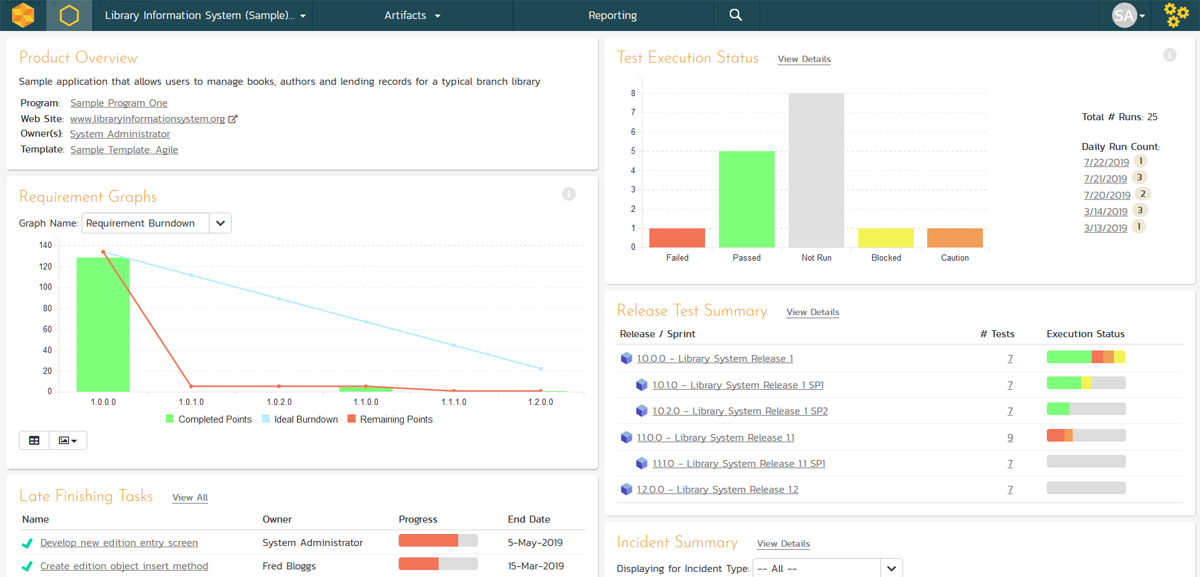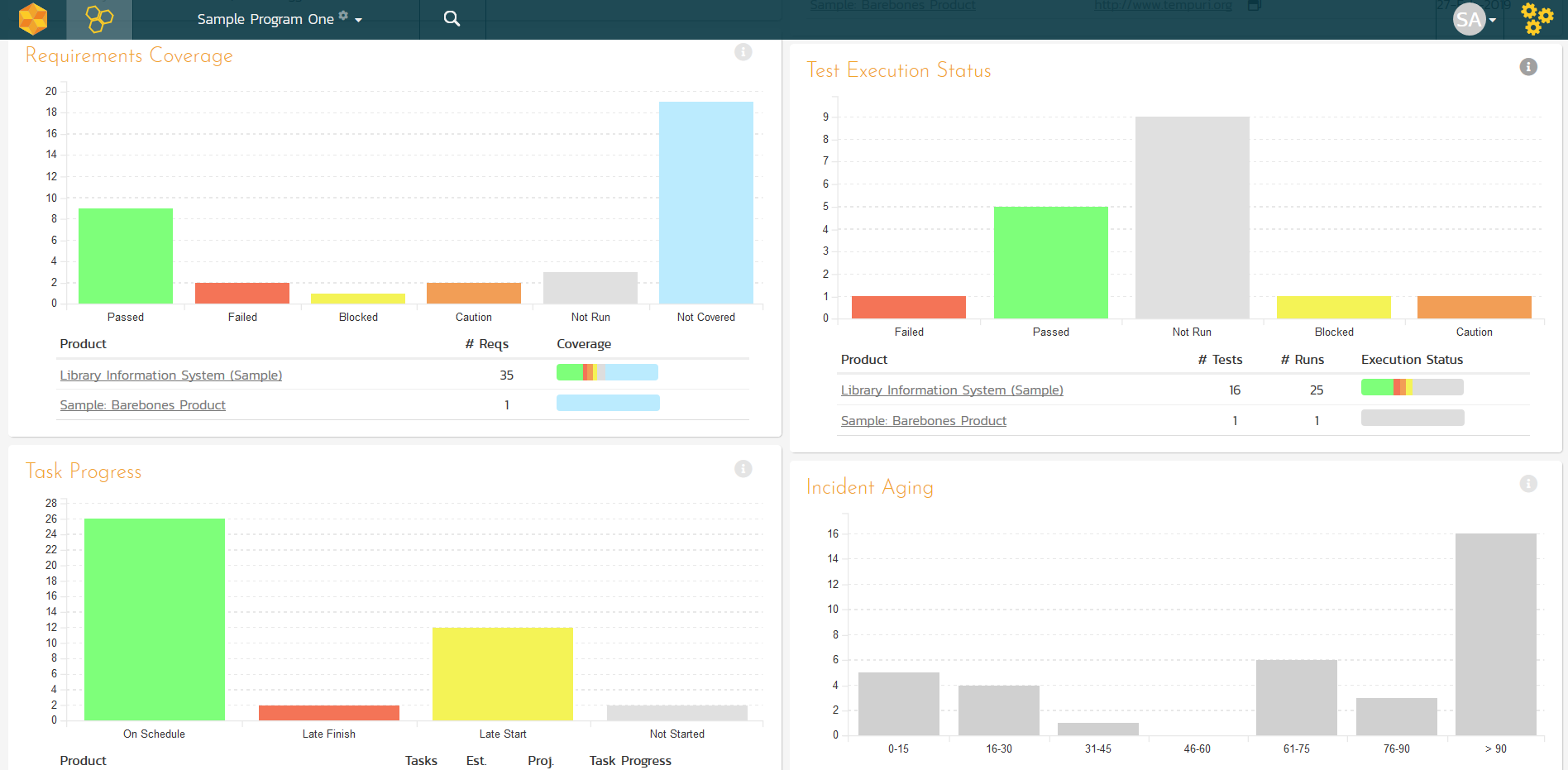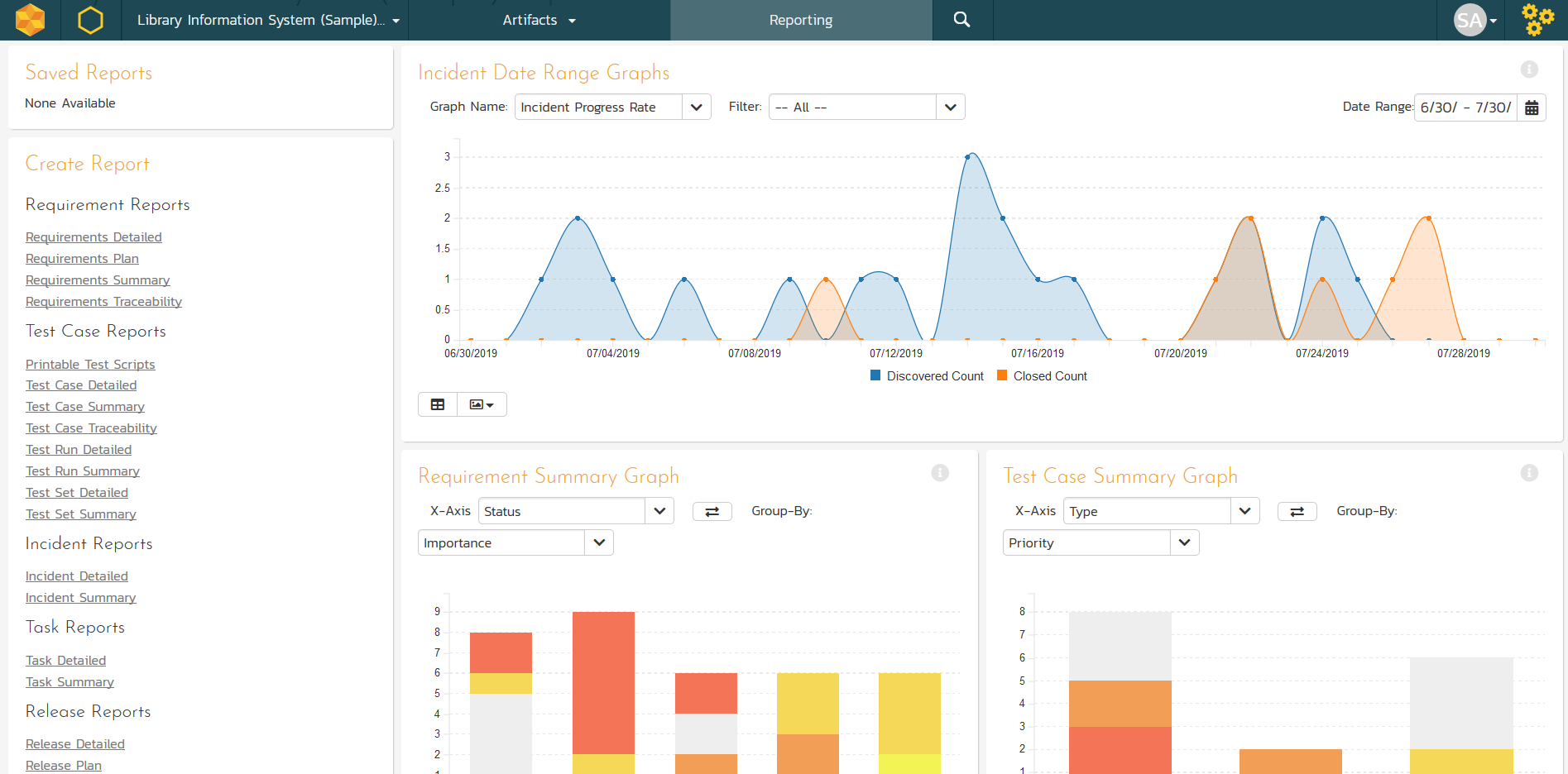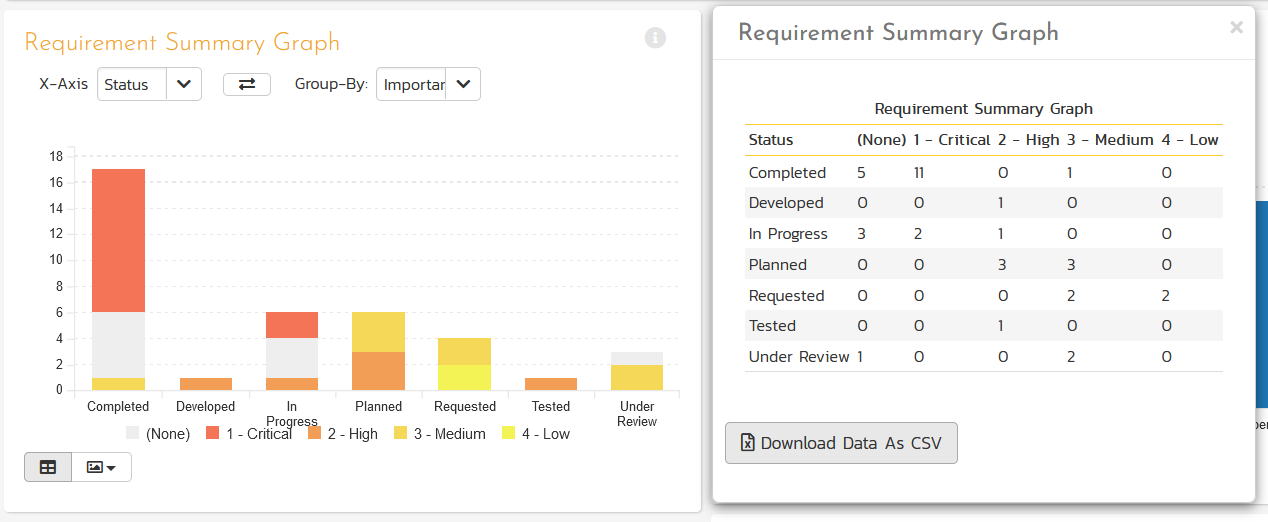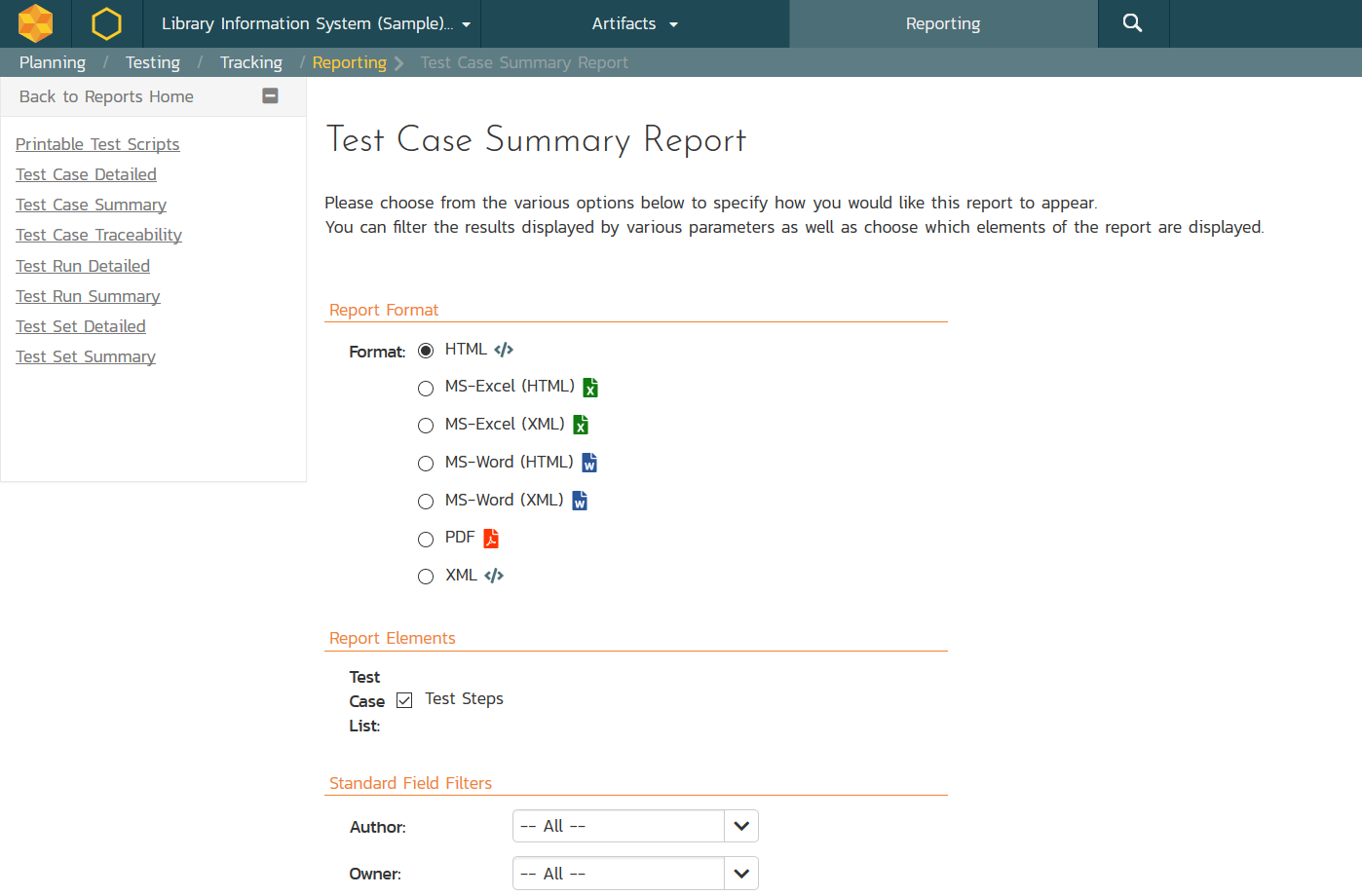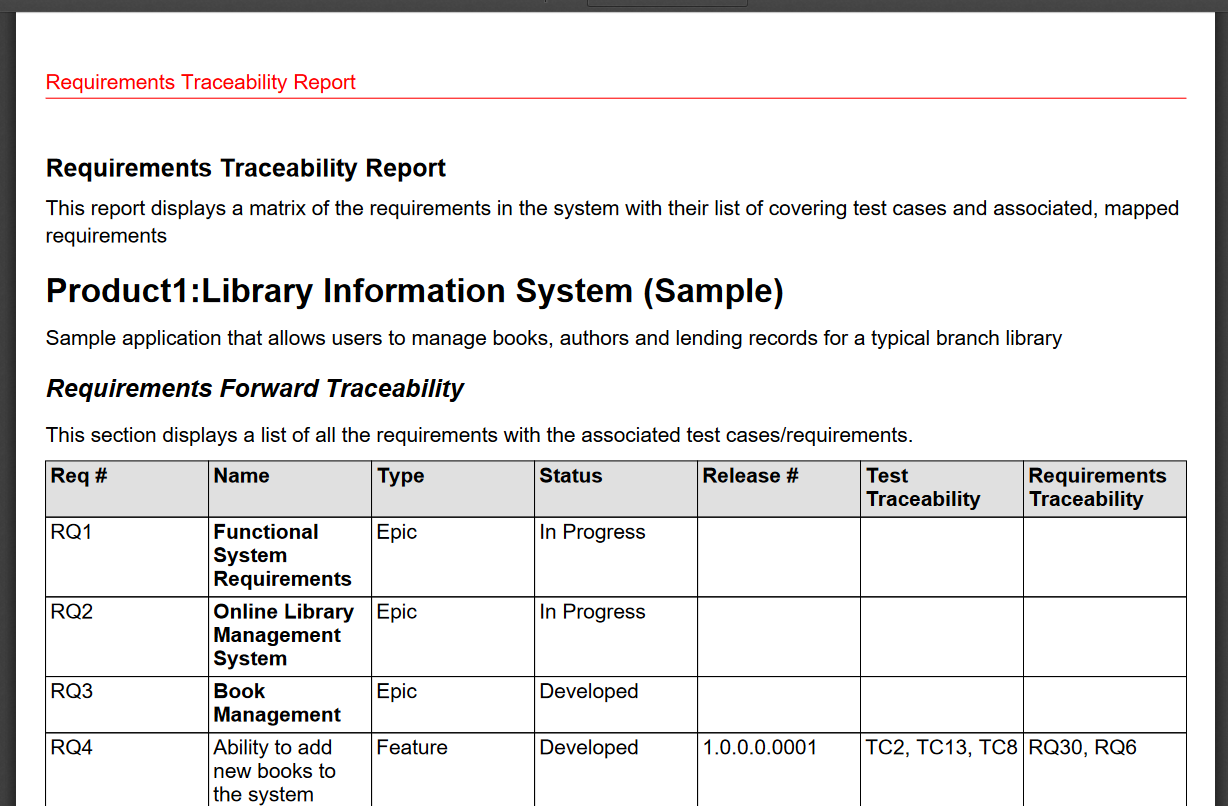SpiraTeam, The Flexible Alternative to Microsoft Azure DevOps
When you are looking for a more powerful and flexible lifecycle management tool for your software development and testing projects than Microsoft Azure DevOps (ADO), SpiraTeam and the Inflectra ecosystem is your number one choice. This guide explains the top 10 reasons why...
SpiraTeam, The Flexible Alternative to Microsoft Azure DevOps (ADO)
A lot of teams working with Microsoft technologies start using Microsoft Azure DevOps (ADO) because it comes “free” (for a small number of users) with Visual Studio and integrates well with the Microsoft Azure cloud platform. However, as their projects scale and their project management, software testing and process management needs increase, they often run into the limitations and constraints of ADO.
When you are looking for a more powerful and flexible lifecycle management tool for your software development and testing projects, SpiraTeam and the Inflectra ecosystem is your number one choice.
This whitepaper explains the top 10 reasons why.
1. End to End Traceability
At Inflectra, we believe that quality and compliance should be built into your software development lifecycle. That’s why our SpiraTeam platform emphasizes end-to-end traceability and auditability, so you can see from each requirement and backlog item, what has been developed, what has been tested, where it has been deployed, and all the issues and defects associated.
From the requirements view, you can see the test cases that have been executed, whether they have passed or failed, and what type of test was involved (automated, manual, performance, security, etc.)
In addition, you can see all the development, management and infrastructure tasks associated with this requirement or backlog item to verify its completion:
Finally, from a development perspective, you can see the traceability from a requirement or backlog item to the defects that have been fixed, code that has been committed and pipeline events that have occurred:
This lets you know if the requirement has been developed and tested successfully, has the code been reviewed, and has it been deployed into the different environments via. CI/CD pipelines. With SpiraTeam, you can also drill down directly from this requirement to the lines of code impacted:
In comparison, within ADO, there is much more limited visibility between backlog items and the different parts of the system. You can create associations between work items:
In this example, you have a link between a backlog item and a defect.
You can link a test case to a backlog item, but there is limited reporting and test coverage reporting:
So, when you need to have robust and powerful end-to-end traceability from requirements to test cases and code, SpiraTeam is the clear winner.
2. Agile Boards that Make Sense
SpiraTeam has a structured set of agile boards that are geared towards each of the key planning activities in an agile project. It includes a dedicated Product Backlog view that shows you all of the backlog items that have not yet been assigned to a release or a Sprint.
Each card in the board can be a requirement type – user story, feature, epic – or an incident type (bug, defect, issue). The requirement cards can also have child items such as tasks and test cases so that you can easily visualize the doneness and test coverage of each backlog item:
This view can be customized to display different levels of detail as well as allowing you group by different swim lanes, including release, component, priority, resources and status.
For sprint / iteration planning, SpiraTeam has a set of dedicated views that let you plan and track the work scheduled for each sprint and iteration in the release. The system will calculate the available effort as items are added.
The epic view lets you see the user stories associated with each of the epics in the current release or sprint:
In addition, SpiraTeam includes Scrum task boards that let you see the individual tasks assigned to each of the Sprints and Iterations as well as by-person:
The user story view lets you see the tasks associated with each of the user stories in the current release or sprint.
For Kanban projects, SpiraTeam provides a Kanban view of the project, where you can see all of the requirements planned for each release organized according to their position in the lifecycle. This view lets you see the flow of the requirements and identify then rectify any bottlenecks:
SpiraTeam includes the ability to set Work In Progress (WIP) limits for each status so that you can limit the throughput of work in each release and sprint.
Azure DevOps does include a powerful set of agile boards that can be configured and customized to handle different methodologies and approaches (including Scrum and Kanban). However, it requires a lot more setup and configuration of iteration paths, area paths and teams to achieve the same results as SpiraTeam. In addition, its board views are primarily organized around status, whereas SpiraTeam has multiple views depending on the activity being performed.
For example, to get a product backlog view in ADO you would need to setup a work item board:
To then be able to view the release and sprint plan for the same project, you have to switch to a completely different part of the system (the backlog view vs. the board view) to be able to see the same work items by release or sprint / iteration:
This is in contrast to the simplicity within SpiraTeam where you can simply change the same board view to be by sprint or release instead of by status.
3. Integrated Requirements Management
Microsoft Azure DevOps was designed primarily to be a tool for use by agile development teams working in small groups independent of each other, with their projects driven solely by a series of user stories and other discrete backlog items. However, as you scale such projects, it quickly becomes apparent that managing the ‘requirements’ for a complex set of interconnected projects and features becomes very difficult and cumbersome.
For example, in Azure DevOps requirements are either a giant grid of backlog items:
Or they can be a set of boards for a specific release/sprint:
In fact, the limitations are such, that there are third-party tools specifically designed to address the requirements management shortfalls that exist within ADO:
In contrast, SpiraTeam includes built-in requirements management views and functionality, whatever your methodology and process. For agile projects, you have the expected backlog and board views:
In addition, though, SpiraTeam includes a flexible hierarchical grid view that lets you manage your hierarchy of requirements, whether that is a traditional waterfall project having system and business requirements or an agile project having features, epics and user stories:
In addition, for projects that have a business analysis team or need to work with requirements that are more textual than simple user stories, SpiraTeam has a built-in requirement document live-editing view:
This view lets you see all of the requirements’ text fields in a live navigable document with inline rich-text editing. You can show and hide different fields in the grey header bar, as well as include multiple rich text fields in the viewable editable such as ‘acceptance criteria’ or other notes.
SpiraTeam also includes functionality for managing other kinds of non-textual requirements such as use cases and process flow diagrams. For example, SpiraTeam has a built-in use-case type that comes with auto-generated use-case diagrams:
For the ultimate in flexibility, SpiraTeam includes a built-in diagram editor:
In addition to being able to manage these different types of requirements, SpiraTeam as described above, includes powerful requirements traceability features that let you see the impact of your requirements changes, including the built-in requirements mind-map view that lets you visualize requirements graphically:
It will even display the traceability links on the map if enabled:
4. Superior Test Management Capabilities
SpiraTeam was built on top of the award-winning SpiraTest test management system, so when it comes to all things quality, SpiraTeam has you covered. It includes the most powerful yet easy to use test and quality management functionality of any product on the market:
SpiraTeam lets you quickly and easily create and manage your test cases in folders, with powerful sorting and filtering capabilities. You can display different columns in your own customized view, including both standard fields and any custom properties defined for the project.
You can view the test cases planned for the entire project, or drill-down and display just the tests planned for a specific release, phase or iteration/sprint.
SpiraTeam includes a powerful and flexible workflow engine so that you can assign test cases for review and your users can provide comments and feedback on the test cases until they are ready for testing:
Each test case consists of a set of test steps that represent the individual actions a user must take to complete the test, complete with expected result and any sample data. You can include component test cases as steps within a parent test, so that you can make a change in one place and all the parent test cases will be updated.
To help you organize and manage your testing schedule, SpiraTeam provides a Test Sets feature. Each test set can contain test cases from a variety of different folders and can be associated with a specific release of the system being tested.
Each test set can be assigned to a single tester for simple regression or functional testing, or you can assign each of the test cases in the test set to a different tester. This allows you to perform testing of different scenarios with the same tests:
SpiraTeam lets you write test cases as ‘data-driven’ parameterized test cases. Each step in the test case consists of the action being performed together with the specified test parameters:
In addition, you can run the same test set multiple times, with different combinations of test parameters used in each iteration. This is possible using the SpiraTeam test configurations option:
Each test configuration set consists of a set of independent lists that have been automatically combined by SpiraTeam to cover all possible combinations of environment and/or test data.
This process if often called pairwise testing. ISTQB defines All-Pairs Testing (or Pairwise Testing) as a black-box test design technique in which test cases are designed to execute all possible discrete combinations of each pair of input parameters.
In contrast, Azure DevOps (ADO) offers basic test management functionality where you have a set of test plans:
Each of the test plans can have associated test cases:
These test cases consist of test steps with the option of having shared steps that are reused between test cases:
There is no real equivalent of SpiraTeam test sets, since the ADO test plans have to provide the equivalent of SpiraTeam test folders. This means that when you organize tests into test plans there is no separate organization for grouping and executing them.
In addition, whereas SpiraTeam can let you automate these test cases and execute them on remote computers using a wide variety of commercial and open-source automated testing tools:
ADO only lets you connect the test cases to unit tests inside its own code repository and pipeline.
5. Modern, Intuitive User Interface
SpiraTeam has a modern mobile-first interface that has been designed to make each of its different modules (requirements, test cases, development, etc.) feel like part of a cohesive system, with users of one feature immediately being familiar with the next one they use.
On the artifact details pages, we have designed the screens to display the most important information most prominently, with all unnecessary clutter and visual elements hidden until they are needed.
In addition, SpiraTeam dynamically adjusts to your screen size so that you can get the most functionality and usability, even when using it on a smaller mobile device such as an iPad or smartphone.
In contrast, ADO has been created by combining several legacy Microsoft products (Team Foundation Server, Microsoft Test Manager and Codeplex) together into a single platform so the user interface of its different modules and features can be disorientating and confusing at times.
For example, the work item screens:
Have a different user interface than the code repository items:
The test management features have a different layout again. In addition, the screens within ADO have a lot of widgets and modules that seem to be forced into the screens (e.g. deployment and development options) that make them less comfortable to use and don’t enable the user’s natural flow.
6. Embeds Best Practices into Your Process
SpiraTeam is designed to facilitate and encourage best practices in your software development and testing lifecycle. When you first launch SpiraTeam, it comes with pre-built templates for different processes and sample projects for different industries and solutions (CRM, ERP, etc.).
SpiraTeam includes a pre-built set of artifacts (requirements, tasks, incidents, test cases, test sets, and releases/sprints) that tightly integrate with each other, with built-in automations that accelerate the use of the tool. For example, when all development tasks are completed, the parent requirement can automatically be set to the Developed status, and when all mapped test cases are passed, the requirement can automatically switch to the Completed status.
The out of the box dashboards and reports integrate the data from the different parts of the system in such a way as to encourage users to maximize the user of requirements, test cases and tasks in a coherent way. The built-in KPIs and dashboard widgets integrate the requirements, tests and code into a unified view of the progress and quality of the system.
SpiraTeam includes a built-in document management system that lets teams manage their process documentation, diagrams and generated reports in a unified place. This enables teams to centralize all of their quality and compliance information in the same place as their software requirements, test cases and code.
SpiraTeam includes dedicated views for different methodologies (waterfall, Scrum, Kanban, hybrid) that make the system work for different teams without compromise. The same instance of SpiraTeam can have all these different views available for different projects:
Finally, SpiraTeam includes a set of comprehensive, pre-built (but customizable) workflows that embed best practices for waterfall, agile and hybrid projects. We have spent time to create templates based on industry best-practices, so you don’t have to!
By contrast, with Azure DevOps (ADO) you are mostly left to your own devices to configure the process and workflow that suits you. There are some pre-defined process templates (Agile and CMMi) but for the most part these are very basic, with just some predefined work item types and attributes.
Azure DevOps (ADO) primarily has developer-centric views based on Scrum and Kanban, with no in-built support for other methodologies (waterfall, hybrid, SAFe, etc.) with teams needing such support having to either use the completely separate Microsoft Project Server product or purchase a third-party addon for ADO.
7. Your Choice of CI/CD Pipelines and Repos
Azure DevOps (ADO) comes with its own CI/CD pipeline infrastructure called “ADO Pipelines” that allows users to create DevOps workflows for continuous integration (CI) and continuous deployment (CD). The pipelines use a built-in YAML editor to define the pipelines and their associated tasks.
Similarly, Azure DevOps (ADO) comes with its own set of code repositories that can use either the legacy Team Foundation Server (TFS) proprietary version control system or the built-in Git repository infrastructure that comes with ADO. In both cases you have to use ADO for your code hosting and build orchestration.
Conversely, SpiraTeam is an open platform that comes with its own source code management system – TaraVault – that uses either the industry standard distributed version control system Git, or the most popular centralized version control system alternative – Subversion. You can choose to have Git for some projects and Subversion for others.
For greatest flexibility, SpiraTeam allows you to disable TaraVault and instead use an external source code management system which it will integrate with. SpiraTeam supports such choices as: Git, Subversion, Mercurial, Perforce, CVS and even legacy Microsoft TFS. In addition, you can use your choice of Git provider such as: GitHub, GitLab, or BitBucket.
Similarly, SpiraTeam lets you have different teams use different DevOps orchestration platforms. SpiraTeam has a set of out of the box integrations with a variety of CI/CD pipelines, including: GitHub, GitLab, CircleCI, Jenkins, TeamCity, Bamboo and even Azure DevOps
That way different teams can use the CI/CD platform that is best suited to their needs.
8. Open Platform for Developers & Testers
Azure DevOps (ADO) is a relatively monolithic platform that works best for teams that are willing to use only the built-in set of tools and extensions. For example, for developers, you need to develop your code in the Visual Studio IDE, commit your code into the ADO source code repository and build your code using the built-in ADO pipelines.
For testers, you can create manual test plans inside ADO, but once you want to start using automation, you need to either write the scripts in .NET using the Visual Studio automated testing infrastructure, or manually connect the automated scripts to your ADO pipelines using YAML files. There are no out of the box integrations with other functional, load, performance or API testing tools.
SpiraTeam on the other hand, has an open architecture approach, which encourages developers and testers to use the best of breed development and testing tools integrated with SpiraTeam as the central information hub.
For developers, SpiraTeam has an extensive array of integrations and extensions that developers write the code in their favorite IDE (Eclipse, Visual Studio, IntelliJ and VS Code), commit the code to our built-in TaraVault source code repository, or use their existing code repo (GitHub, GitLab, BitBucket, etc.), and use the most appropriate CI/CD platform for DevOps orchestration and deployment.
For testers, SpiraTeam comes with its own companion test automation product – Rapise – but in addition, it has a large library of connectors and extensions that let you use the best of breed test automation tools. For example, SpiraTeam integrates with a wide variety of commercial functional testing products such as TestComplete, UFT, Ranorex, Tosca and Worksoft, as well as open-source frameworks such as Selenium, Appium, NUnit, jUnit, and PyTest.
In addition, SpiraTeam integrates with other special testing tools such as load/performance testing products – LoadRunner, NeoLoad, WebLoad and JMeter – and API Testing tools such as SoapUI and ReadyAPI.
Whatever tools are in your DevOps toolchain, SpiraTeam is the perfect solution to integrate and orchestrate them to provide real-time visibility and test coverage.
9. Supports All Aspects of the Project Lifecycle
Azure DevOps (ADO) is primarily a tool for developers, with tight integration between the work items (user stories and bugs), source code, and the DevOps pipelines. For a team of developers, it is a unified tool that gives them the key features they need to do their jobs.
However, when you start to include the needs of other audiences: project managers, program managers, testers, quality assurance, designers and business analysts, the limitations of ADO become clear. It is a good product for developers, but it does not have the necessary features for testers, with a limited testing module, limited project planning features for managers, and a no views or functionality available for business analysts.
In comparison, SpiraTeam covers all the key phases of the project lifecycle. Its requirements module provides multiple different views of requirements that can be used by business analysts, project managers, testers and developers just as easily.
SpiraTeam includes its world-class test management and quality assurance module that provides a rich set of artifacts to manage testing, including test cases, test sets, test runs, test steps, automation hosts and test configurations. Its testing functionality is derived from our SpiraTest test management system that many ADO clients use instead of the built-in test manager!
SpiraTeam fully covers the software development lifecycle with support for managing source code, pull requests, code reviews, development tasks and includes integration with the most popular CI/CD pipelines as described previously.
SpiraTeam facilitates effective cross-discipline project management with the its integrated dashboards that cut across the different parts of the project (requirements, development, testing), project planning boards and Gantt charts that include all the work in the project, not just the development.
Finally, SpiraTeam includes a powerful issue tracking system that manages issues, defects, and enhancements as well as support requests and other tracked items.
10. Limited Reporting and Analytics
Microsoft Azure DevOps (ADO) has a reporting dashboard that initially is not populated:
You can add widgets to the dashboard using the widget library. That lets you create some simple project-level dashboards that contain project KPIs and other metrics, along with various types of graph and data table:
However, the dashboards are tied to the project and the dataset, so if you want to have a dashboard for a specific release or sprint, you have to create a whole new dashboard. For example, if you wanted to view the requirements test coverage, task progress, burndown and velocity for different releases, you would need to create a master dashboard for the project and then clone it for each of the releases or sprints you wanted to reuse it for.
Similarly, there is no provision in ADO for creating dashboards or reports at higher levels than a project. You cannot display program or portfolio level reports or dashboards.
Finally, ADO does not have a built-in document generation capability. So, if you want to create an MS-Word or Acrobat PDF report of all your requirements, test cases and defects, that is not possible without using a separate tool. Similarly, the only way to get data into a spreadsheet such as Excel is to use the work item export to CSV option, there are no formal reporting options, and the CSV format does not include any styling or presentation information, just the raw data:
SpiraTeam on the other hand, has an out of the box, but customizable project dashboard that summarizes all of the information regarding the project into a comprehensive, easily digestible form that provides a “one-stop-shop” for people interested in understanding the overall status of the project at a glance.
It contains summary-level information for all types of artifact (requirements, test cases, tasks, builds, defects, etc.) that you can use to drill-down into the appropriate section of the application. The dashboard can be switched dynamically to display the same widgets for the entire project, a specific release or a specific sprint.
SpiraTeam also includes program management dashboards that consolidate the information from multiple projects into a single comprehensive view at the program level. This lets large organizations see the health and track the progress of large solutions and programs in a single view:
SpiraTeam also includes more customizable reporting dashboards where you can use our pre-built reporting widgets to display graphs and charts based on any of the standard or custom fields.
Each of the widgets will let you display the data as a grid and export the data as a CSV file, as well as let you export the graph itself into a standard image format such as PNG, JPEG or BMP.
For the ultimate in flexibility, SpiraTeam also includes a custom graphing engine that lets you write your own graphs using the full power of SQL. You can then publish these graphs for your team to use.
The graphing engine lets you visualize your data in donut, pie, and line chart formats, as well as display the underlying data, and export to Microsoft Excel for further analysis.
Finally, SpiraTeam can produce printable reports, documents and spreadsheets from the data in the system using the rich library of standard reports. The formats supported include MS-Word, MS-Excel, Adobe Acrobat PDF, HTML and XML.
Each report can be configured by users, with the option to include different elements, filter by any of the built-in or custom fields. You can choose to either run the report immediately or save for future use, with an option to share with the whole team.
SpiraTeam naturally includes the ability to customize the document templates, add custom sections or even create your own MS-Word, Excel or PDF reports from scratch to match your company’s standard format and templates.
The Inflectra Difference
In addition to the advantages of SpiraTeam from a features and functionality perspective, there are two additional reasons why you should trust Inflectra with your software development lifecycle management needs.
Concurrent Licensing
There are two main licensing modules in use in the software industry – named user licensing, and concurrent user licensing. Microsoft Azure DevOps (ADO) uses named user licensing, where each user that will access the system needs their own dedicated license, even if they will be logging in only occasionally to run a report, or view the status of a project. You can quickly start needing a lot more licenses than you originally planned for.
SpiraTeam on the other hand uses concurrent user licensing instead, with all editions of SpiraTeam supporting unlimited named users, unlimited projects and unlimited storage. The concurrent user approach means that you will typically need a fraction of the number of licenses, as compared to named user licensing. In addition to the simple difference in number of licenses, the concurrent licensing model offers you increased flexibility:
- If you change the staffing of a project, nothing needs to be done to purchase extra licenses. You don’t need to purchase additional licenses if the size of the team remains the same, but the names change.
- If you have teams working globally in different time zones, you can use the same concurrent licenses in different time zones. For example, team 2 can use the same licenses and team 1 if they don’t work at the same time.
- Executives and other occasional users won’t generally impact your licensing costs.
Azure DevOps (ADO) Being Sunset by Microsoft
At Inflectra, we have a long-term multi-year product roadmap for SpiraTeam and its cousins SpiraTest and SpiraPlan. We continue to invest in new features and functionality, continue to improve usability, and add new integrations and plugins for other tools on a monthly basis.
However, it seems that Microsoft is moving its development efforts away from Azure DevOps (ADO) and focusing instead on its alternative developer platform – GitHub, with some of the enterprise features of ADO migrating to GitHub Enterprise. At the present time, it seems that source code management, and CI/CD pipelines are being migrated over. However, it is not clear if the test management and other work item planning features will be available in GitHub.
Reduce your risk by choosing SpiraTeam, it works with both ADO and GitHub source code, work item tracking and pipelines already, and we have a simple migration tool that will migrate your ADO projects to SpiraTeam seamlessly and effortlessly.
Ready to Give SpiraTeam a Try?
We hope this comparison guide was useful for you.
To sign up for your free trial of SpiraTeam (no credit card required), just click here.https://www.inflectra.com/Products/SpiraTeam/Demo.aspx
DISCLAIMER: All information regarding the compared products have been made on the basis of information available on the product websites, from former customers and analysis of trial installations of the product. The analysis and views expressed in this section and the information made available are purely those of Inflectra Corporation. It is possible that the compared products have additional features not mentioned in this whitepaper.Try SpiraTeam free for 30 days, no credit cards, no contracts
Start My Free TrialAnd if you have any questions, please email or call us at +1 (202) 558-6885







